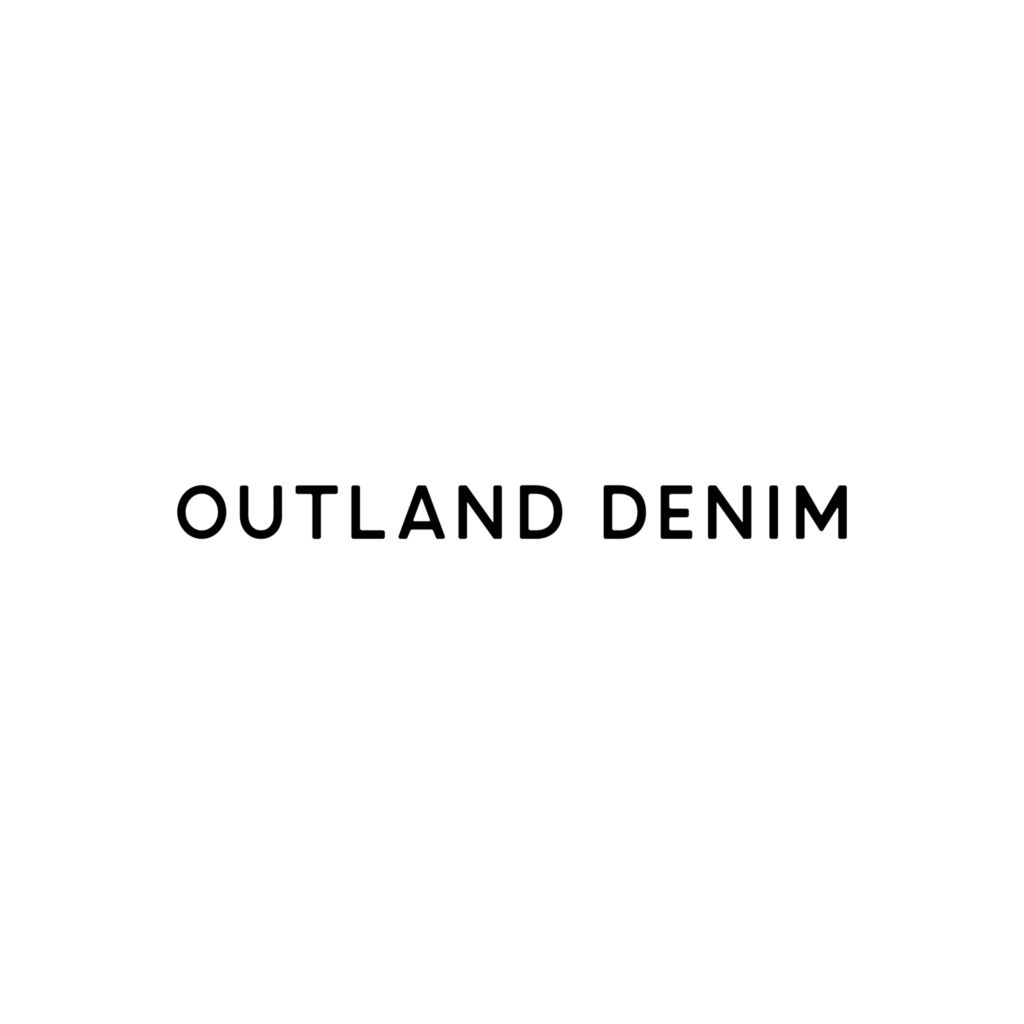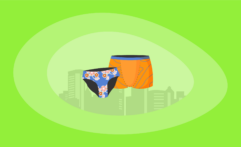20 Most Sustainable Australian Clothing Brands: The Conscious Consumer’s Guide
Impactful Ninja is reader-supported. When you buy through links on our site, we may earn an affiliate commission.
Learn more
Learn more
.
Hey fellow impactful ninja ? You may have noticed that Impactful Ninja is all about providing helpful information to make a positive impact on the world and society. And that we love to link back to where we found all the information for each of our posts. Most of these links are informational-based for you to check out their primary sources with one click. But some of these links are so-called "affiliate links" to products that we recommend. First and foremost, because we believe that they add value to you. For example, when we wrote a post about the environmental impact of long showers, we came across an EPA recommendation to use WaterSense showerheads. So we linked to where you can find them. Or, for many of our posts, we also link to our favorite books on that topic so that you can get a much more holistic overview than one single blog post could provide. And when there is an affiliate program for these products, we sign up for it. For example, as Amazon Associates, we earn from qualifying purchases. First, and most importantly, we still only recommend products that we believe add value for you. When you buy something through one of our affiliate links, we may earn a small commission - but at no additional costs to you. And when you buy something through a link that is not an affiliate link, we won’t receive any commission but we’ll still be happy to have helped you. When we find products that we believe add value to you and the seller has an affiliate program, we sign up for it. When you buy something through one of our affiliate links, we may earn a small commission (at no extra costs to you). And at this point in time, all money is reinvested in sharing the most helpful content with you. This includes all operating costs for running this site and the content creation itself. You may have noticed by the way Impactful Ninja is operated that money is not the driving factor behind it. It is a passion project of mine and I love to share helpful information with you to make a positive impact on the world and society. However, it's a project in that I invest a lot of time and also quite some money. Eventually, my dream is to one day turn this passion project into my full-time job and provide even more helpful information. But that's still a long time to go. Stay impactful,Affiliate Disclosure
Why do we add these product links?
What do these affiliate links mean for you?
What do these affiliate links mean for us?
What does this mean for me personally?
![]()
Amid growing concerns about the textile industry’s environmental impact, there is pressure to find greener clothes for your wardrobe. And as modern supply chains for clothing tend to spread out all over the world, there is an argument to be made for lowering the impact of buying clothes by sticking with brands closer to home. So, we had to ask: Which are the most sustainable Australian clothing brands?
The most sustainable Australian clothing brands are Outland Denim, Boody, and The Common Good Company, which prioritize low-impact materials and reduce textile waste. In addition, The Very Good Bra and All the Wild Roses avoid (virgin) plastic materials and cut down their carbon footprint.
Whether you are searching for a pair of denim jeans or a set of lingerie made in Australia to add to your wardrobe without negatively impacting the soil, the water, the animals, and other people, there is a brand for you. So, let’s keep reading to learn more about the most sustainable Australian clothing brands and how they ensure sustainable, ethical practices.
Here’s How Sustainable Australian Clothing Brands Generally Are
The geographical journey of garments often plays an important role in their sustainability because it affects many social and ecological aspects in a product’s life-cycle, from the treatment of textile workers that are deemed fair to the use of chemicals that would be allowed by the local authority.
“Sustainable: The ability to be maintained at a certain rate or level | Avoidance of the depletion of natural resources in order to maintain an ecological balance”
Oxford Dictionary
To understand the sustainability of Australian clothing, we’ve assessed the life-cycle and each stage’s sustainability. This life-cycle assessment (LCA) is a method to evaluate the environmental impacts of products and materials. Here’s a quick summary of our LCA of Australian clothing!
Here’s How We Selected the Most Sustainable Australian Clothing Brands
The brands on this list were chosen based on their commitment and actions to promote sustainable practices while reducing the environmental impacts of the textile industry.
They are transparent about their materials, processes, and workforce management within their supply chain.
Some brands focus their efforts on reducing waste and optimizing natural resources while others strive to reduce the carbon footprint of their clothes.
All of these brands share the commitment to reshape the textile industry toward a more sustainable and Earth-friendly sector.
These Are the 20 Most Sustainable Australian Clothing Brands
Most Sustainable Australian Clothing Brands
Overall, these Australian clothing brands are sustainable. Yet, they take various approaches to reduce environmental impacts and uphold ethical standards. Let’s dive into each brand and find out more.
Outland Denim: Good for Humanity. Good by Nature.
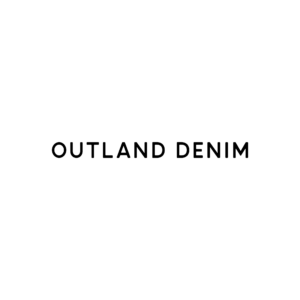
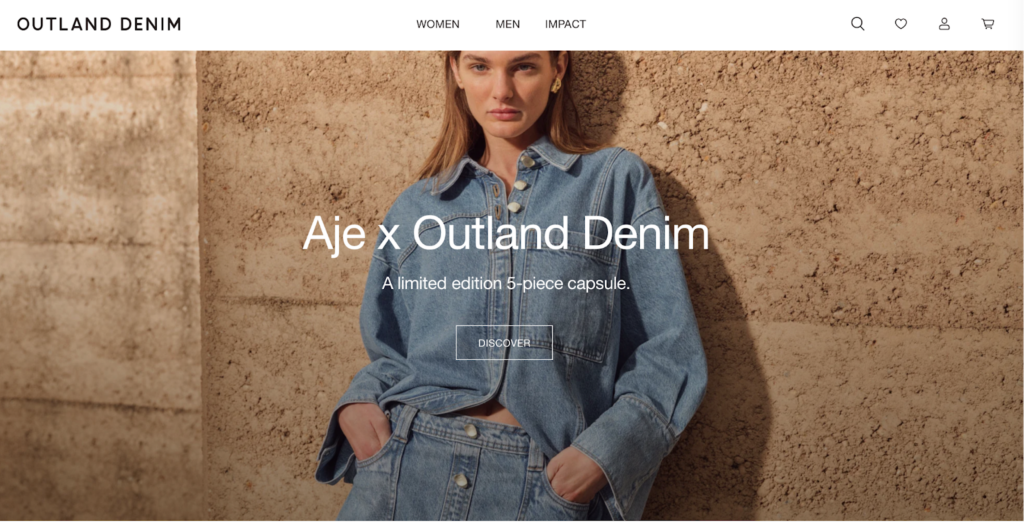
“We source the finest raw materials from around the world while offering sustainable employment and training opportunities to women who have experienced exploitation.”
Outland Denim
🌎
How do they ensure their sustainability?
Outland Denim ensures their sustainability by sourcing a high proportion of low-impact textile and packaging materials, minimizing textile waste, and implementing low-input (water, energy, and chemical) techniques to reduce their environmental impacts. First, they prioritize the use of organic and natural materials for their jeans, including organic cotton certified by the Global Organic Textile Standard (GOTS), lyocell (Lenzing’s TENCEL™), recycled cotton, cotton under the Better Cotton Initiative, linen, and recycled polyester. Additionally, their packaging is recyclable. Secondly, they have waste-reduction programs such as the collection and repurposing of factory floor waste, the collection and distribution of deadstock, and the resale of Outland garments via AirRobe. On top of that, Outland Denim utilizes advanced technology by Jeanologia—laser and ozone finishing together with e-Flow washing—to reduce the inputs of water, energy, and chemicals in manufacturing their jeans. For example, ozone finishing uses 65% less water, 20% less energy, and 80% less chemicals than traditional techniques. Last but not least, they use renewable energy in their supply chain to reduce their climate impact.
🌐
How do they ensure their ethics?
Outland Denim has a Suppliers’ Code of Conduct that covers four of the ILO’s Fundamental Principles and Rights at Work. They trace all of the supply chain and visit their suppliers regularly. Additionally, they ensure that workers in the final production stage are paid a living wage.
🤝
Are they part of any giving-back programs?
Outland Denim employs people from varying vulnerability and social injustice backgrounds, providing them with opportunities, skills acquisition, living wages, and education.
🛍️
What is their product range?
- Best for: womenswear, menswear
- Product range: jeans, shorts, skirts, jackets, shirts, T-shirts, dresses, overalls, jumpsuits
- Price range: $$
- Size range: S–3XL
Boody: Fit-For-All Everyday Essentials Made With Eco-Friendly Materials

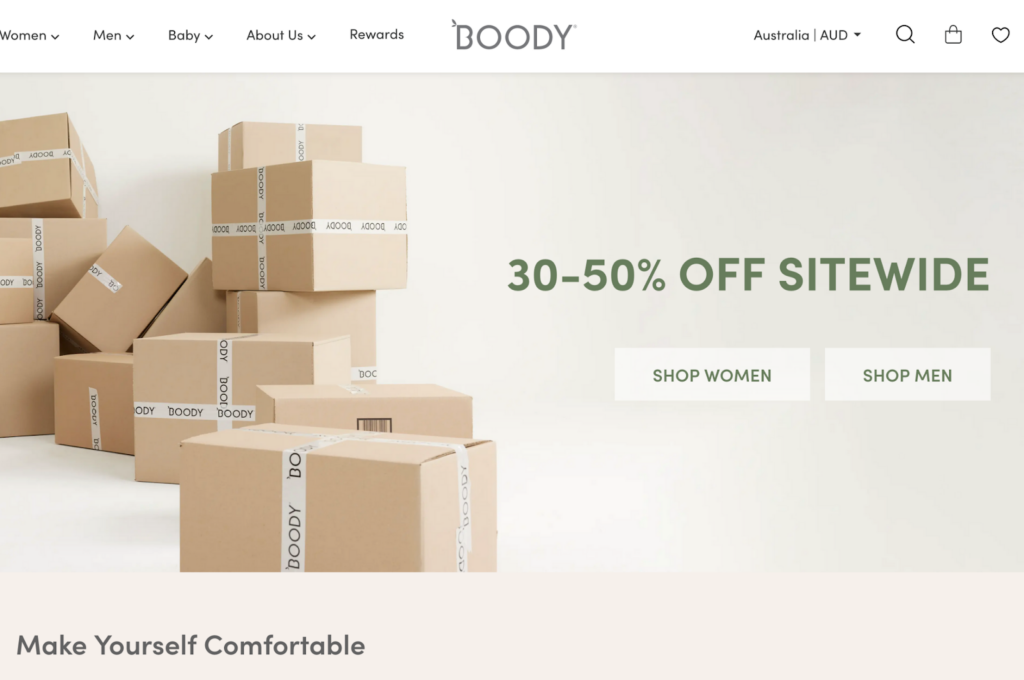
“Boody emphasises quality and simplicity. We bypass trends and fads as we believe they lead to overconsumption and waste.”
Boody
🌎
How do they ensure their sustainability?
Boody ensures sustainability by sourcing organic bamboo and organic cotton for their fabrics, reducing manufacturing waste, recycling all water used in production, and using recycled packaging. By sourcing plant materials from organic farms, Boody helps to keep out synthetic pesticides and fertilizers. Furthermore, their bamboo lyocell, LYOLYTE™, and bamboo viscose are manufactured in closed-loop systems where liquids and solvents are recycled, reused, or safely removed. Their cotton fibers are organically grown and certified by the Global Organic Textile Standard. Boody also has a zero-waste design, which enables knitting garments in tubes, leaving behind very little fabric wastage. Lastly, they encourage recycling of Boody’s ready-to-retire apparel by partnering with UPPAREL to launch The Goodness Loop. This platform enables consumers to buy a return shipping label, which starts the recycling process, and get a gift voucher to redeem on new Boody products.
🌐
How do they ensure their ethics?
Boody enforces fair labor practices by upholding suppliers to their Code of Conduct, which covers four of the ILO’s Fundamental Principles and Rights at Work. They also trace most of their supply chain. Lastly, the suppliers in their final production stage are certified by the Worldwide Responsible Accredited Production (WRAP).
🤝
Are they part of any giving-back programs?
As a 1% for the Planet member, Boody donates 1% of all their online sales to non-profits who help protect the environment. Additionally, they give 10% of all online beanie sales to the Chris O’Brien Lifehouse, a not-for-profit hospital and research institute dedicated to transforming cancer care. They also work with Thread Together to provide new clothing to less privileged Australians.
🛍️
What is their product range?
- Best for: kidswear, menswear, womenswear
- Product range: underwear, activewear, maternity wear, socks, stockings, tights, shorts, plus-size
- Price range: $$
- Size range: XXS–XXL
The Common Good Company: Men’s and Women’s Basics Made With Recycled Materials
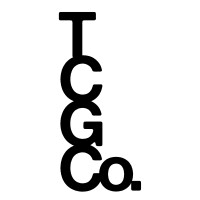
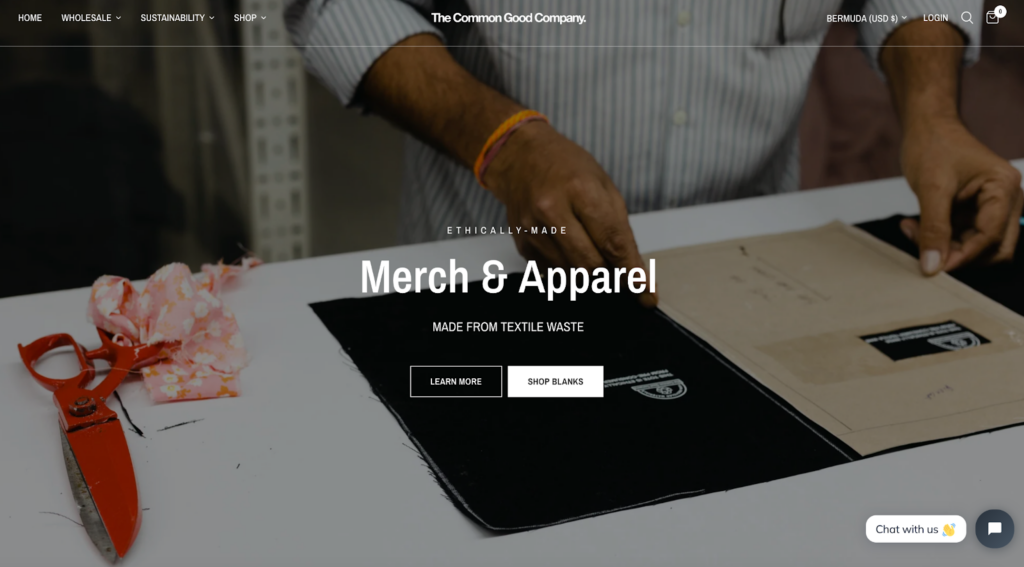
“By using Recycled Pre-consumer textile waste and Recycled Polyester in our garments, we have eliminated the unnecessary waste, water use, land use and pollution that are typically involved with the production of yarns made from virgin materials.”
The Common Good Company
🌎
How do they ensure their sustainability?
The Common Good Company ensures their sustainability by developing their own 100% recycled textile materials, which follow the Global Recycled Standard. Their T-shirt fabric comprises 60% recycled cotton—repurposed from pre-consumer waste—and 40% recycled polyester (rPET)—regenerated from single-used objects like plastic water bottles. This alleviates the stress on natural resources to grow more cotton and extract virgin fossil fuels while reducing waste in landfills and the oceans. For example, their orders in 2022 saved 2,433.6 kgs of textile waste and 5,3442.7 plastic bottles. The Common Good Company also strives to reduce waste further down the life-cycle in the manufacturing stage with a zero-waste initiative. Their manufacturing factory implements a zero-waste cutting process, which manipulates the cutting layouts to reduce wastage. Factory spill is remanufactured and used in future purchase orders without impacting quality while scrap and yarn waste is sorted for recycling. Additionally, the brand is a part of the Noissue Eco Alliance, committing to using low-impact materials, such as FSC-certified issue papers and reusable compostable bags. Lastly, The Common Good Company reduces their climate impact by opting for less carbon-intensive modes of transport, partnering with a carbon-neutral delivery service (Sendle), offsetting emissions with One Tree Planted, and powering their home/office with Powershop, Australia’s greenest power company who offset all carbon emissions.
🌐
How do they ensure their ethics?
The Common Good Company traces all their suppliers and audits the final production stage. Their manufacturing partner is certified by Fairtrade, SA8000, and SEDEX.
🤝
Are they part of any giving-back programs?
The Common Good Company creates garments and accessories for organizations advocating climate action, such as recycled beanies for Surfers for Climate and merchandise for AFLP4CA. Additionally, in 2022, the brand raised over $12,000 with Downlands Design Studio for Flood Relief Fundraising.
🛍️
What is their product range?
- Best for: womenswear, menswear
- Product range: T-shirts, fleece, beanies, totes
- Price range: $$
- Size range: XS–XL
The Very Good Bra: 100% Plastic-Free Undergarments
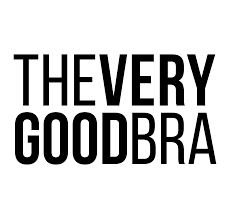
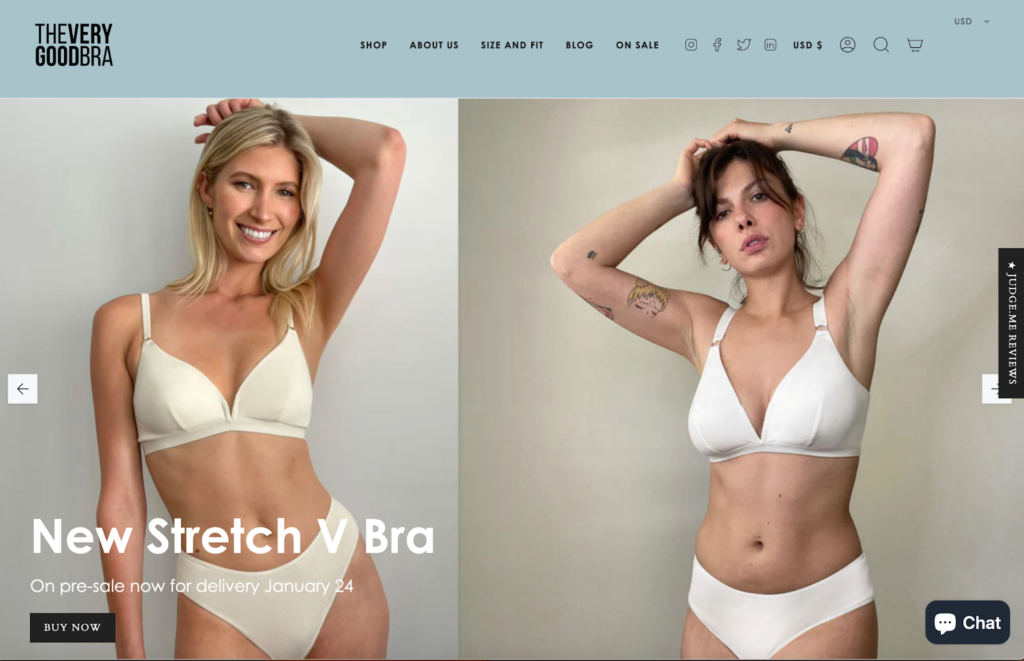
“Our materials are sourced worldwide to be 100% botanically circular, leaving no negative environmental impact at end of life.”
The Very Good Bra
🌎
How do they ensure their sustainability?
The Very Good Bra ensures sustainability by prioritizing natural materials to make fully compostable bras, operating pre-sales to avoid overproduction, and facilitating services for repairing and reselling their items. Firstly, they exclusively use natural components for not only their base fabrics but also their sewing thread, labeling, and accessories so that their worn-out bras can be composted in your own garden. For example, the list of materials for the V for Victory Bra includes 100% organic cotton body fabric and liner fabric, as well as 100% plant-based thread and elastic from organic cotton and natural rubber. Additionally, The Very Good Bra packs their orders in recyclable tissue and a 100% compostable or 80% recycled and recyclable poly mailer. Secondly, they run at least three pre-sales a year with new styles, materials, or colors to plan their inventory more efficiently across their size range, minimizing waste. On top of that, they use all leftover fabric to manufacture small runs of sleepwear and briefs. Lastly, the brand offers replacement straps and runs a Facebook Buy Swap and Sell Group for bras needing new homes, extending the lifespan of each product and reducing its life-cycle’s environmental impact.
🌐
How do they ensure their ethics?
The Very Good Bra traces most of their supplier chain. They also have a Factory Code of Conduct, which covers four of the ILO’s Fundamental Principles and Rights at Work.
🤝
Are they part of any giving-back programs?
The Very Good Bra works with a social enterprise to warehouse and fulfill orders, providing employment opportunities to people of all abilities who would otherwise struggle to find meaningful work. Through their partnership with i=Change, customers have the choice at checkout of three charities, to whom they can donate $1, post-sale. Additionally, The Very Good Bra has donated sample fabric to The Social Outfit, as well as to Whitehouse Design fashion students. They have also sent usable sample bras to The Uplift Project and Thread Together.
🛍️
What is their product range?
- Best for: womenswear
- Product range: bras, briefs, sleepwear, loungewear
- Price range: $$$
- Size range: S–XXL
All the Wild Roses: Timeless Bohemian Clothing Made With Upcycled and Vintage Fabrics
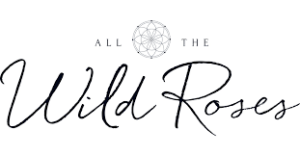
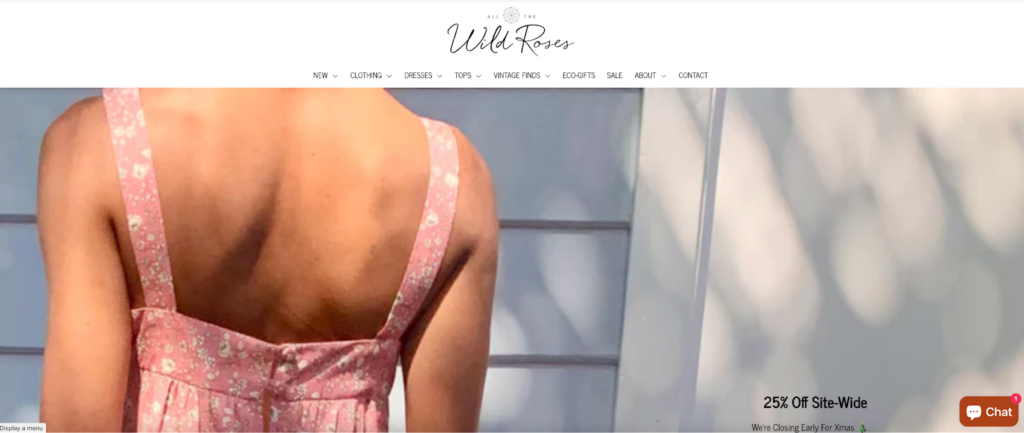
“From designing to our making process, our intention & focus is to create timeless designs that last, to do it in a way that minimises our environmental footprint and to do it with care & respect for our community (including and not limited to our makers, suppliers, customers and more).”
All the Wild Roses
🌎
How do they ensure their sustainability?
All the Wild Roses ensures sustainability by reducing textile waste; sourcing biodegradable, plastic-free materials; and lowering their carbon footprint. Their waste reduction incentives include sourcing deadstock fabrics, limiting production runs, and making clothes to order. By curating deadstock, surplus, or remnant fabrics into making their clothes, they help reduce the amount of textile waste in landfills. All the Wild Roses makes up to 90% of their collections with upcycled fabrics. To further minimize textile waste, they run limited batches of clothes, making the most of the upcycled fabrics they find while offering made-to-order service to avoid unnecessary inventory. Regarding textile materials, they prioritize biodegradable fibers derived from nature, including upcycled linen, cotton, and rayon. Their packaging is compostable and plastic-free. Lastly, they have incentives to lower their carbon footprint, including using 100% renewable and carbon-neutral energy for their design office, offsetting their operations with GreenFleet, a non-profit dedicated to restoring Australian Forest, opting for a carbon neutral shipping service, and operating 100% online which uses about 30% less energy than traditional retail.
🌐
How do they ensure their ethics?
All the Wild Roses has a formal statement covering workers’ rights. They ensure payment of a living wage in the final stage of production. Additionally, they trace their supply chain and visit their suppliers.
🤝
Are they part of any giving-back programs?
All the Wild Roses partners with Opportunity International Australia to provide microloans to women-led businesses in developing countries.
🛍️
What is their product range?
- Best for: kidswear, menswear, womenswear
- Product range: dresses, jumpsuits, tops, skirts, maternity dresses, breastfeeding dresses
- Price range: $$
- Size range: XXS–XXL
Bondi Born: Committing to Recycling Waste and Cleaning the Environment
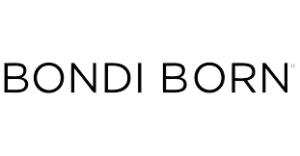
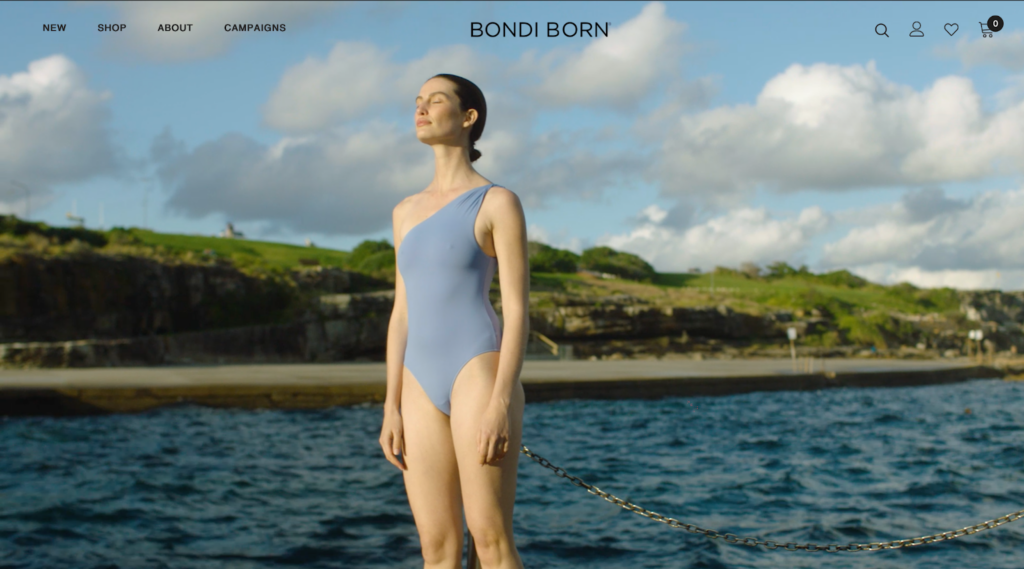
“Our solemn wish is that when our customers wear BONDI BORN it brings them joy, through body confidence, an elevated sense of style and the knowledge that by buying BONDI BORN they are doing what’s best for people and planet.”
Bondi Born
🌎
How do they ensure their sustainability?
Bondi Born’s sustainability effort is evident in their commitment to the longevity of their product, minimal operational waste, and carbon neutrality. Firstly, they make swimwear using three technically advanced synthetic fabrics with REACH and OEKO-TEX® certifications, which means they do not release harmful substances that can be hazardous to people’s health. In particular, the Sculpteur fabric will last up to 10 times longer than the average swimwear material. Secondly, they actively minimize textile waste by buying fabrics to order, operating in small production runs, and repurposing deadstock fabrics. Lastly, Bondi Born is certified Carbon Neutral by offsetting all their emissions in solar energy projects. Their carbon reduction incentives include shipping by sea, not by air, whenever possible, and opting for manufacturing and transporting partners who use renewable energy.
🌐
How do they ensure their ethics?
Bondi Born ensures their ethics by upholding their suppliers to a Code of Conduct, covering four of ILO’s Fundamental Principles and Rights at Work. They also trace part of their supply chain, including all manufacturers in the final production stage in Australia, a low-risk country for labor abuse.
🤝
Are they part of any giving-back programs?
Bondi Born is known to be part of any giving-back programs.
🛍️
What is their product range?
- Best for: womenswear, menswear, kidswear
- Product range: shirts, pants, jackets, blazers, hoodies, sweatshirts, tops, blouses, knitwear, T-shirts, sneakers, accessories
- Price range: $$
- Size range: XS–XL
A.BCH: Clothes Designed for Circularity
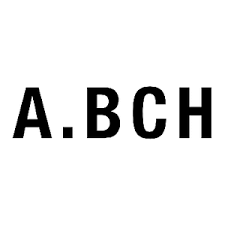

“A.BCH is a circular fashion label. Our sole purpose is to champion a better way to design, make, wear and circulate clothing to help create a more equitable and sustainable world.”
A.BCH
🌎
How do they ensure their sustainability?
A.BCH promotes sustainability with a circular design approach, which involves designing out waste, keeping materials and products in use, and regenerating natural systems. Firstly, they source 100% regenerative and biologically circular inputs for all garments. Their fabric list includes cotton (GOTS-certified organic cotton, recycled cotton, and the high-yield Australian cotton), organic linen, hemp, surplus merino wool certified by the Responsible Wool Standard, recycled wool, TENCELTM Lyocell, recycled polyester, and natural rubber elastic. For the button component, A.BCH uses corozo—a fruit seed of the Tagua Palm trees. Secondly, they create products for longevity while supporting consumers to extend a garment’s lifespan. In particular, they send out a digital care manual for each A.BCH piece to help keep it looking its best for a long time, reducing the need for buying new, premature recycling, or down-cycling. A detailed care guide for all garments and each fabric type is available on their website. Additionally, A.BCH offers free repairs for life and takes back any piece that no longer serves its purpose. Thirdly, the brand takes meaningful action to reduce emissions from transportation and distribution. All their garment orders are sent carbon-neutral. Regarding the shipping of raw materials, they opt to partner with carbon-neutral mills to lower carbon emissions in production. They also purchase 100% wind-power energy for our HQ and offset all carbon emissions generated at the A.BCH studio/HQ via UN Certified Emission Reduction (CER) certificates.
🌐
How do they ensure their ethics?
A.BCH traces most of their supply chain and ensures workers in the final production stage are paid a living wage. Their manufacturing partners are all Ethical Clothing Australia (ECA) accredited, and they re-certify each year to ensure they are meeting Australian standards for safety, pay, and working conditions. Regarding animal welfare, they opt for RWS-certified (deadstock) wool, ensuring the fair treatment of the sheep.
🤝
Are they part of any giving-back programs?
A.BCH is not known to be part of any giving-back programs.
🛍️
What is their product range?
- Best for: menswear, womenswear, gender-neutral
- Product range: pants, shorts, denim, dresses, jackets, coats, shirts, thermal garments, sleepwear, sweatshirts, tank tops, T-shirts
- Price range: $$
- Size range: XS–3XL
ELK: A Conscious Fashion Brand With a Focus on Transparency
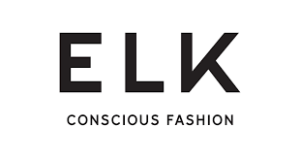
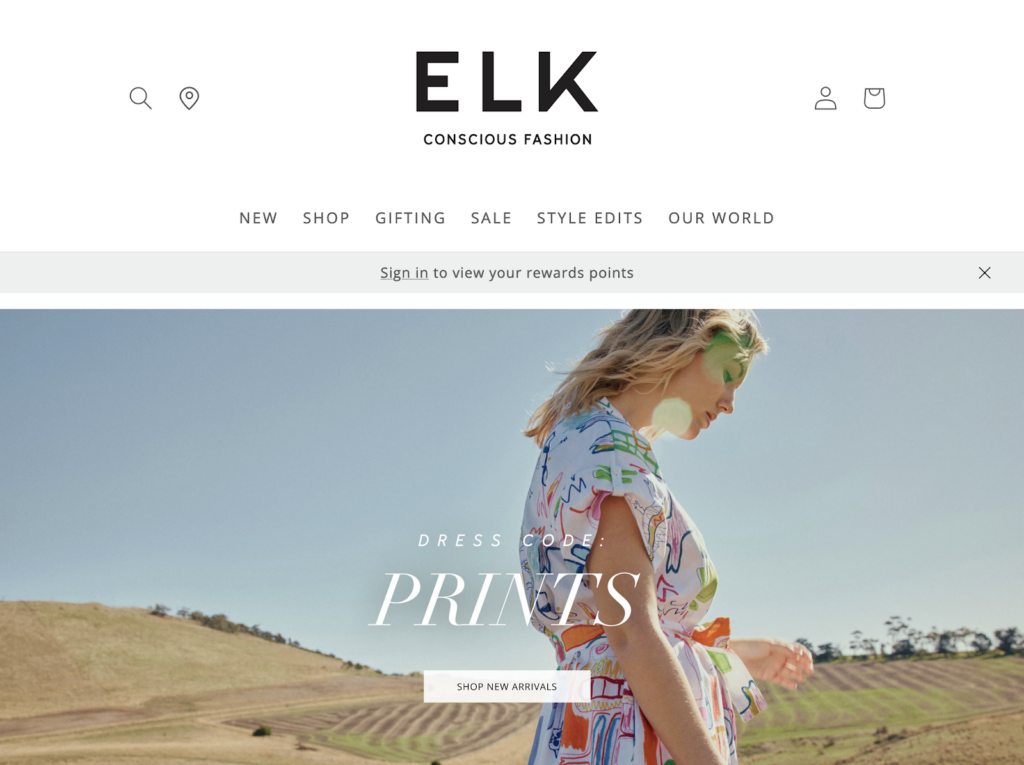
“With a focus on natural or lower impact materials the business continues to seek better alternatives for fibres, production, distribution, circular solutions and waste.”
ELK
🌎
How do they ensure their sustainability?
ELK promotes sustainability by taking climate action throughout their operations and value chain and striving for circularity. Firstly, they reduce their carbon emissions by way of their direct operations with 100% renewable energy from onsite solar panels (47%) and a green energy provider. In 2023, ELK measured their Scope 3 emissions and found material sourcing as the largest contributor to these emissions. As such, they aim to reduce these emissions by establishing their ELK PREFERRED FIBRES & MATERIALS SOURCING GUIDE as a design reference for responsible sourcing. Their 2023 collection consisted of 5% high performers—including natural and semi-natural fibers like Fairtrade– and GOTS-certified organic cotton, organic linen, organic hemp, responsible wool, and TENCELTM— and 58% great-option fibers—such as GOTS/OCS organic cotton, Cotton Made in Africa (CMIA), Australian Cotton (myBMP), and dew-retted bast fibers (linen and hemp). Energy-intensive man-made cellulose fibers, including lyocell, modal, and viscose, accounted for the highest percentage in 2023 (28%). Secondly, ELK strives for circular fashion, adjusting their systems and developing programs that minimize the waste produced from ELK products, such as using discarded leathers within the supply chain to create new products, providing care instructions, repairing existing ELK products, and using recycled materials for packaging (81% in 2023).
🌐
How do they ensure their ethics?
ELK is committed to mapping their supply chain and tracing their materials right back to the origin, ensuring that their products are made responsibly concerning workers, animals, and the environment. They also publicly share their full supplier listing. In 2023, they mapped 100% and 86% of their Tier 1 and Tier 2 suppliers, respectively. The brand aims to fully map and publish their supply chain by 2025. Their facilities are audited and reported through Sedex Members Ethical Trade Audit – SMETA Best Practice Guidance. ELK also upholds their suppliers to their Code of Conduct, which covers all of the ILO’s Fundamental Principles and Rights at Work.
🤝
Are they part of any giving-back programs?
ELK is a member of 1% for the Planet, committing to donate 1% of all sales to environmental non-profit groups. In April 2020, ELK committed to donate $2 for every online order to TreeProject for seedlings to restore indigenous Australian vegetation. The brand also donates money and products to various initiatives, including bushfire relief initiatives, Oxfam Australia, Fitted for Work’s RED program, and the Asylum Seeker Resource Centre (ASRC). In 2023, their staff also completed 333 hours of volunteering, giving back to the planet and the community.
🛍️
What is their product range?
- Best for: womenswear
- Product range: dresses, knitwear, tops, jumpsuits, skirts, shorts, jackets, jeans, pants, footwear, accessories
- Price range: $$$
- Size range: XS–XL
peony: Carbon-Neutral Luxury Swimwear Made From Repurposed Waste


“Our approach is to create consciously, engage in ongoing reflection and continually drive progress towards sustainability, circularity, inclusivity and transparency..”
peony
🌎
How do they ensure their sustainability?
peony ensures their sustainability by sourcing eco-friendly materials for textiles and packaging while reducing plastic waste. Specifically, their swimwear main fabrics and linings are created in-house with recycled content, which includes REPREVE® yarn made from 100% recycled plastic bottles and ECONYL® yarn, a 100% regenerated nylon fiber made from nylon waste that would otherwise pollute the earth, such as fishing nets, fabric scraps, and carpet flooring. So far, their use of recycled swimwear fabrics has diverted approximately 104,975 lbs of post-consumer waste from landfills. For their resort wear, the brand also sources low-impact fabrics, including GOTS-certified organic cotton, European Flax®-certified linen, EcoVero®—a responsibly sourced viscose yarn made by Lenzing with EU Ecolabel‘s stamp of approval, recycled polyester, and hemp. Linen and organic cotton accounted for the largest percentages of fibers in their 2022 resort wear collection: 37% and 35%, respectively. peony also opts for low-impact packaging, using only recycled, compostable, and reusable materials. Their orders are wrapped in recycled, compostable, and FSC-certified tissue paper and sent in mailer bags made from waste, using only renewable solar power—no water, acid, or bleaches. Their garment components include swing tags made from recycled and FSC-certified wood, swimwear hygiene liners made from FSC-certified wood-based bioplastic, and compostable and biodegradable bags for bikini straps. Secondly, peony designs for circularity, which means that garments are made to be worn, reused, and recirculated for as long as possible. They achieve that by sourcing the highest quality fabrics and using construction techniques that extend the life of each garment. The brands also aim to create pieces that transcend seasons so you can use them in your wardrobe season after season. When a piece is at the end of its life, peony will take it back for responsible reuse or recycling. Lastly, all of peony’s printed fabrics are digitally printed, reducing fabric waste and water consumption.
🌐
How do they ensure their ethics?
peony traces most of their suppliers. Their manufacturing partners for swimwear and resort wear hold internationally recognized certifications, including BSCI, SA8000, and OEKO-TEX®.
🤝
Are they part of any giving-back programs?
peony donates excess stock and samples to Worn for Good, a social enterprise devoted to social and environmental change and the movement toward a circular economy. They also partner with Thread Together on an ongoing basis, donating “end-of-the-line” new clothing to people in their community. Some other causes supported by peony include the Queensland Paediatric Oncology Ward and the Australian Bushfire.
🛍️
What is their product range?
- Best for: womenswear
- Product range: swimwear tops, swimwear bottoms, bikinis, coverups, dresses, tops, skirts, pants, accessories
- Price range: $$$
- Size range: XS–3XL
Bhumi: Fully Transparent and Ethical Textile From a Carbon-Neutral Brand

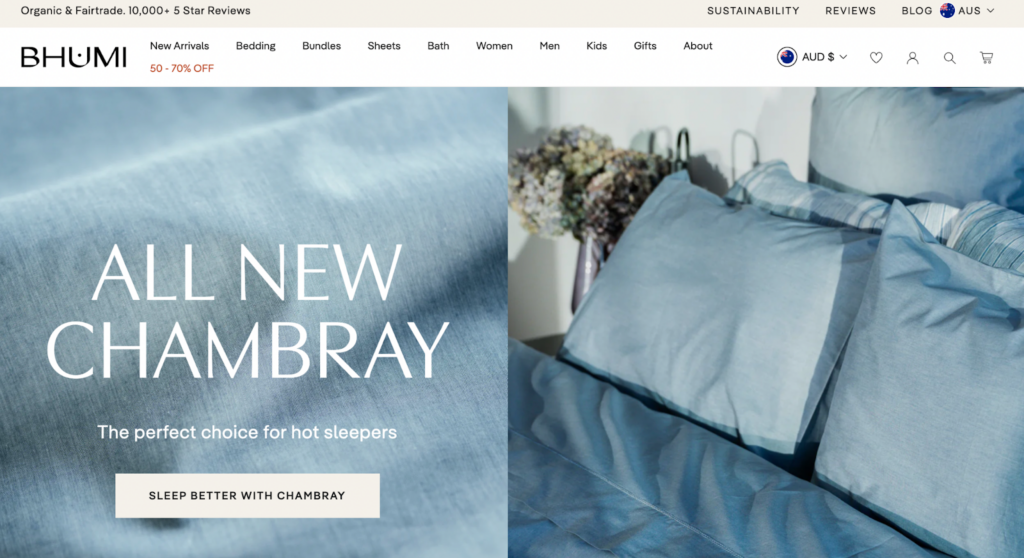
“We encourage you to make thoughtful consumer purchases.”
Bhumi
🌎
How do they ensure their sustainability?
Bhumi prioritizes sustainability through eco-friendly materials, low-impact processes, and water-saving initiatives. At least 50% of their fabrics, including organic linen and organic cotton, are certified by GOTS and Fairtrade. Furthermore, 100% of their products are free of harmful chemicals, pesticides, and GMOs. They also capture rainwater to lower water use in their supply chain. Lastly, using the Green Story’s Carbon Registry, they measure, reduce, and offset the carbon emissions occurring in making and delivering Bhumi products.
🌐
How do they ensure their ethics?
Bhumi puts ethics at the core of their operations. Most of the band’s supply chain is certified by Fairtrade International – Small Producers Organisations and Global Organic Textile Standard (GOTS), which ensures worker welfare and fair labor practices. They have also established an end-to-end system working directly with family-owned farms and factories to ensure traceability at every step. On top of that, the brand promotes ethical consumerism by advocating for conscious purchasing decisions and awareness of the origins of clothing.
🤝
Are they part of any giving-back programs?
Bhumi supports and partners with people, groups, and projects that are activists for change. Specifically, they participate in numerous giving-back environmental programs supporting nature conservation, climate action, and reforestation.
🛍️
What is their product range?
- Best for: kidswear, menswear, womenswear
- Product range: knitwear, sleepwear, tops, blouses, shorts, underwear
- Price range: $$$
- Size range: XXS–XXXL
Elle Evans: Swimwear Made to Order From Circular Regenerated Nylon

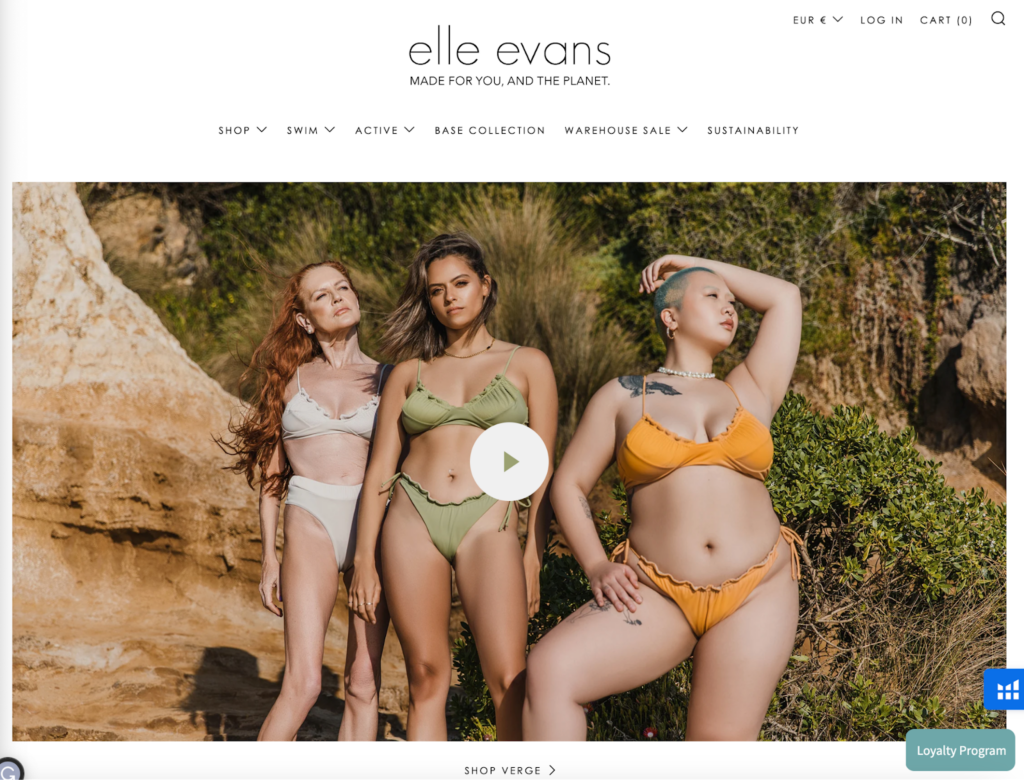
“I knew I wanted to structure my company differently, and starting from scratch meant that sustainability could be at the heart of every decision I made.”
Elle Evans, founder of Elle Evans
🌎
How do they ensure their sustainability?
Elle Evans prioritizes sustainability by reducing the carbon footprint throughout the life-cycle of their products, from sourcing to transporting and packaging. Firstly, their fabrics have a high proportion of ECONYL® regenerated yarn from nylon waste, avoiding the high-impact virgin nylon while rescuing waste such as finishing nets from the bottom of the oceans and carpets from landfills. Further down the production line, they have their fabrics digitally printed using water-based, non-toxic inks, a process that leaves no ink discarded down drains and no washing required after printing. Afterward, the fabrics are only cut and sewn after a product is ordered to further reduce waste. The final products are wrapped in carry bags made from deadstock fabrics from Elle Evans’ studio and delivered using carbon-neutral couriers Sendle.
🌐
How do they ensure their ethics?
Elle Evans makes their products themselves in-house by the founder/owner and a small team. Regarding their materials, they trace most of their supply chain.
🤝
Are they part of any giving-back programs?
Elle Evans gives back by donating 1% of all their sales to the Healthy Seas Initiative, supporting their mission to protect and advocate for the seas.
🛍️
What is their product range?
- Best for: womenswear, kidswear
- Product range: swimwear, tops, blouses, shorts, hats, accessories, plus-size
- Price range: $$
- Size range: XXS–XXXL
JOSLIN: Premium Traceable Fashion Made in Australia
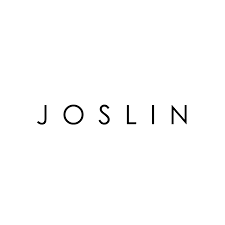
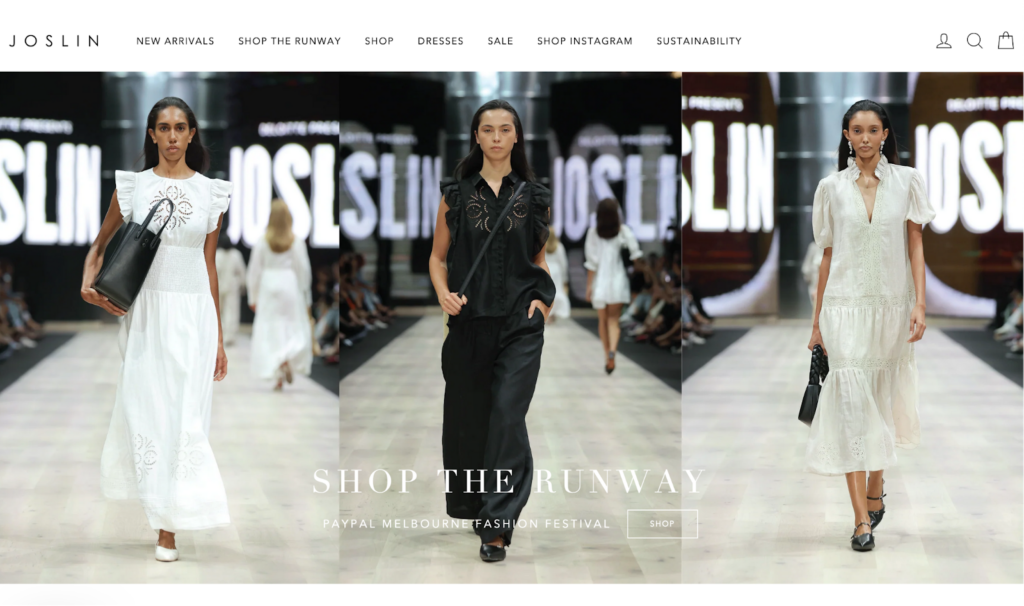
“JOSLIN only uses textiles, yarns and raw materials that are of natural origin and traceable to the source.”
JOSLIN
🌎
How do they ensure their sustainability?
JOSLIN ensures their sustainability by sourcing raw materials that are of natural origin and traceable to the source. Specifically, their signature linen is certified with European Flax®, guaranteeing local farming that respects the environment and commits to having no irrigation, GMO, or waste. The brand also uses organic cotton verified from farm to textile/yarn stage with the Global Organic Textile Standard, cashmere verified from farm to yarn stage with the Good Cashmere Standard, merino wool verified from farm to yarn stage with Responsible Wool Standard, traceable silk, and ramie. Regarding garment components, JOSLIN opts for the best practices when possible. They use GRS-certified blended post-consumer recycled plastic in all button molds for designs with textile ‘covered buttons’ and FSC-certified viscose voile lining. Further down the life-cycle in the manufacturing stage, they partner with OEKO-TEX® STANDARD 100-certified dye houses to color their textiles and trims, ensuring product safety and healthier waterways. Furthermore, JOSLIN uses a minimal variety of fabrications in all of their collections to eliminate dead stock waste, reducing their environmental impact. The brand also values trans-seasonal and enduring design elements to give garments longevity. Lastly, their collections present timeless color palettes of black, white, and neutrals that can be worn for seasons and years to come, keeping garments away from landfills for as long as possible.
🌎
How do they ensure their sustainability?
JOSLIN upholds their suppliers with a Code of Conduct that covers four of the ILO’s Fundamental Principles and Rights at Work. They trace most of their supply chain and publish their Tier 1 and Tier 2 supplies on their website. Their factories and makers are audited using the Amfori BSCI Social Audit (Business Social Compliance Initiative) and/or SMETA Audit (Sedex Members Ethical Trade), verifying ethical and social compliance. Their six makers are audited by a third party (SGS/Qima) to ensure they comply with local laws.
🤝
Are they part of any giving-back programs?
JOSLIN is not known to be part of any giving-back programs.
🛍️
What is their product range?
- Best for: womenswear
- Product range: dresses, jumpsuits, playsuits, knitwear, tops, skirts, pants, shirts
- Price range: $$$
- Size range: XS–XL
Flare Street: Vintage-Inspired, Hand-Made Velvet Clothes
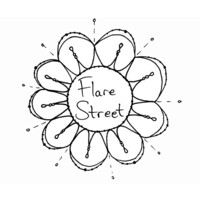
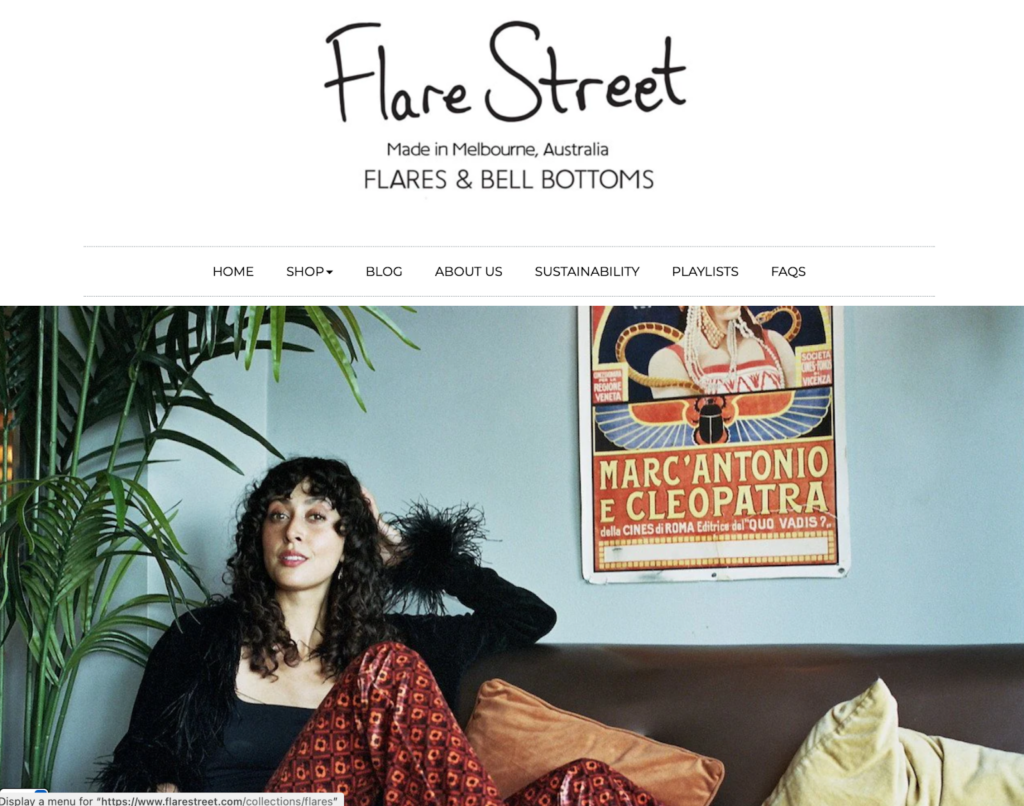
“ Focusing on buying from local and independent fabric stores is super important to our brand, we source factory ends and fabrics from local closing manufacturers to help keep the worlds waste down. ”
Flare Street
🌎
How do they ensure their sustainability?
Flare Street promotes sustainability by minimizing their climate impact and reducing textile waste. Specifically, Flare Street minimizes their climate impact by reducing and offsetting their carbon emissions. In 2019, they partnered with the Carbon Neutral Charitable Fund to offset their emissions for that year (and in the years since) by planting trees native to Australia, supporting natural ecosystems and wildlife, and creating climate-resilient habitats. In 2020, Flare Street moved to a solar-powered studio. Additionally, they use a carbon-neutral delivery service to send off their orders. Regarding waste reduction approaches, they source factory surplus and deadstock to vintage-inspired clothes, operate on limited production runs and pre-orders, and donate their offcuts to a local Melbourne company that repurposes, recycles, and re-spins this yarn to create socks, couches, etc. All the thread used in their garments is 100% recycled from discarded water bottles, while their garments are packed in 100% compostable satchels.
🌐
How do they ensure their ethics?
Flare Street traces most of their supply chain. Their key manufacturing partner is based in Australia, a low-risk country for labor abuse, pays workers a living wage, and is certified by Ethical Clothing Australia. Furthermore, Flare Street is transparent about their operation, from the designing process to the creation of their garments and the origins of their fabrics. For example, their luxury velvet fabrics come from South Korea, while their knits come from Italy.
🤝
Are they part of any giving-back programs?
Flare Street contributes to an Indigenous-controlled Naarm-based organization as part of #paytherent.
🛍️
What is their product range?
- Best for: womenswear
- Product range: tops, bottoms, catsuits
- Price range: $$
- Size range: XS–3XL
Luna + Sun: Sustainable Linen Womenswear With a Focus on Motherhood
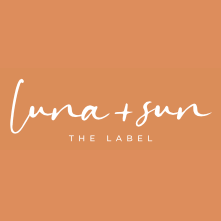
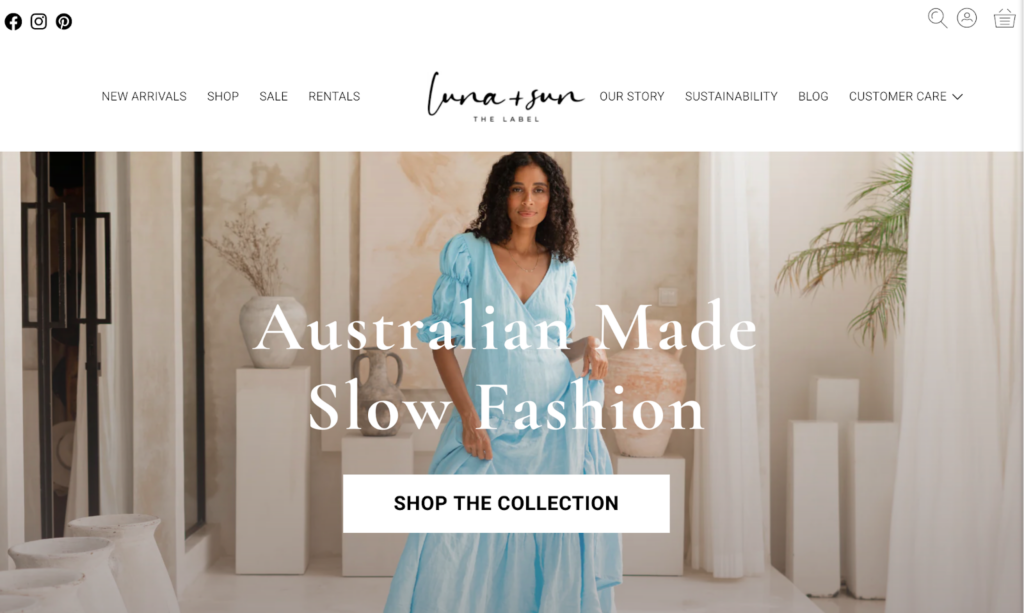
“Luna + Sun is not just about ethical and sustainability-made clothing; it’s about fostering a community with like-minded women who inspire and uplift each other.”
Luna + Sun
🌎
How do they ensure their sustainability?
Luna + Sun ensures their sustainability by sourcing eco-friendly materials, minimizing textile waste, and reducing their climate impact. Firstly, they use 100% linen fabrics certified by OEKO-TEX® STANDARD 100 for their garments. In addition, their components are also plant-based, including cotton-natural rubber elastics, organic cotton labels, linen hanging ribbons, and corozo buttons. Regarding packaging, Luna + Sun also actively stands on being eco-friendly. They use tote bags from linen and satchels made from 100% compostable materials. Their thank-you notes and swing tags are also made from recycled paper. Secondly, Luna + Sun has several approaches toward reducing textile waste during manufacturing, including employing pattern layout techniques that maximize fabric use, making gifts and small items with end rolls, and home composting the smallest pieces of fabric. The brand also partners with other organizations like UPPAREL, AirRobe, and Rntr to take back, recycle, and rent their garments to keep garments longer in circulation and avoid clothing pieces ending up in landfills before it is necessary. Additionally, all returned items are resold or mended and then resold instead of being sent to a landfill, a common practice of fast fashion.
🌐
How do they ensure their ethics?
Luna + Sun ensures their ethics by being transparent about their supply chain. They publicly share their suppliers for fabric and garment components and their manufacturing partners. Based in Brisbane, their factory is certified by Ethical Clothing Australia (ECA), ensuring that workers are paid appropriately, receive their minimum legal entitlements, and work in safe conditions.
🤝
Are they part of any giving-back programs?
Luna + Sun partners with One Tree Planted to support their reforestation efforts. Consumers have an option at check out to plant a tree. For every tree planted by a customer, Luna + Sun will plant another one. They also donate fabric scraps to The Social Studio to support their work helping migrants and refugees.
🛍️
What is their product range?
- Best for: womenswear
- Product range: dresses, tops, pants, maternity wear, accessories
- Price range: $$$
- Size range: S–L
Bon Label: Organic Cotton T-Shirts Doing Good Things for Womankind
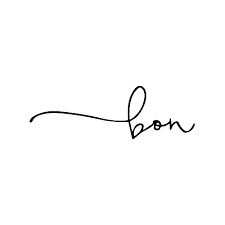
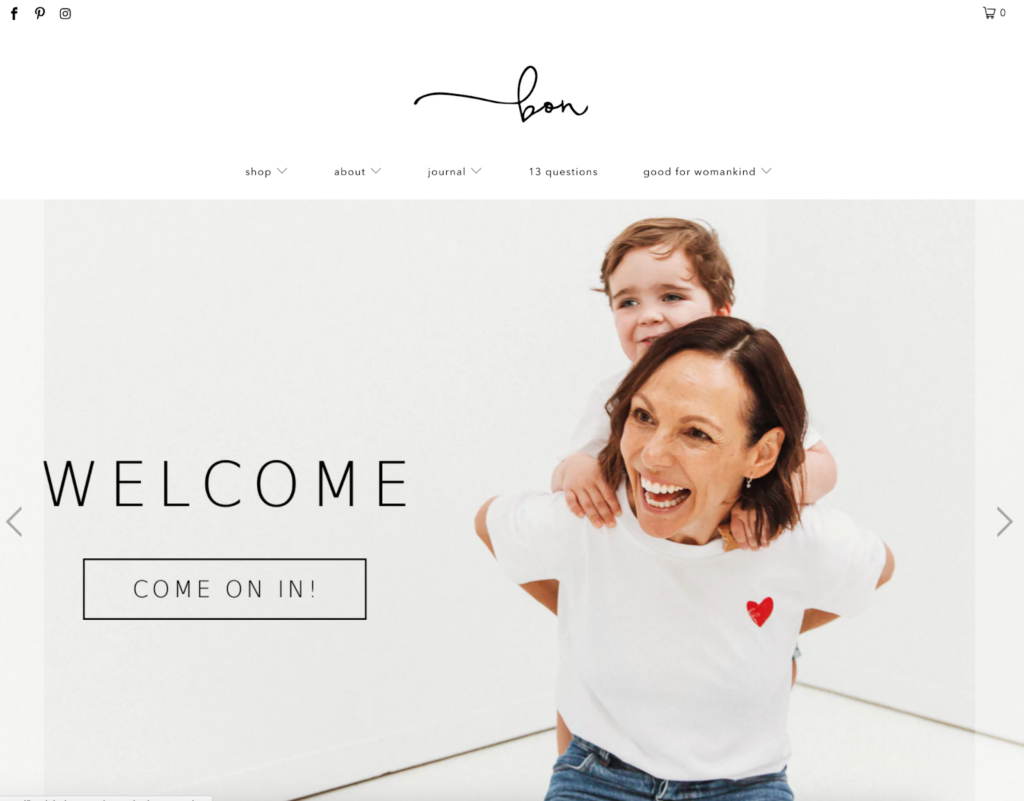
“Bon tees are good tees. Organic, ethical, meticulously designed and expertly crafted. They’re made to be loved and worn to death. The opposite of fast fashion.”
Bon Label
🌎
How do they ensure their sustainability?
Bon Label promotes sustainability by sourcing exclusively organic, non-GMO, and Fairtrade cotton for all their garments. Further down the life-cycle in the manufacturing stage, their garments are printed and embroidered locally, minimizing travel miles and the associated carbon emissions. They use low-impact water-based dyes for all of their regular prints. Regarding packaging, Bon Label strives to be more sustainable by means of using recyclable, biodegradable, and sustainable forestry materials. Additionally, Bon Label takes meaningful actions to reduce their climate impact. These include powering their studio with 100% renewable energy, using natural light (instead of light bulbs) for as long as the sunshine will allow, manufacturing most of their tees, and printing their brand collateral locally to reduce transport distances. Lastly, Bon Label advocates for slow fashion where clothing items are made to last for a long time and with simple shapes and minimal designs that work in many different ways.
🌐
How do they ensure their ethics?
Bon Label ensures their ethics by sourcing Fairtrade cotton, which means farmers are paid a fair price for their effort. Additionally, Fairtrade pays a premium on which farmers and their workers collectively decide where to invest, either into their farming practices or in areas such as health and education for the community. Their Australian-based manufacturing partner, OCC Apparel, is certified by both the Global Organic Textile Standard and the Australian Certified Organic for all processes, from spinning to weaving through the dyeing process. They also partner with a factory in Bangladesh, which is a member of the Fairwear Foundation.
🤝
Are they part of any giving-back programs?
Bon Label donates $1 to charitable causes through i=change with every order. 100% of that dollar goes to a charity of the consumer’s choice. The three charities they support are Her Future Coalition, the Asylum Seeker Resource Center, and Greening Australia. They also donate clothing samples and seconds to charity.
🛍️
What is their product range?
- Best for: womenswear
- Product range: T-shirts, leggings, accessories
- Price range: $$
- Size range: XS–XL
Dharma Bums: Vegan, High-Performing Yoga and Activewear Clothes
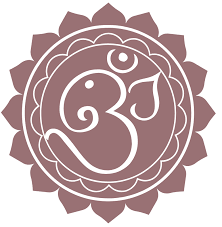

“We try to set ourselves apart by focusing on making every garment design and print as unique and timeless as possible.”
Dharma Bums
🌎
How do they ensure their sustainability?
Dharma Bums ensures sustainability by making long-lasting multifunctional pieces based on high-performance, low-impact materials, including recycled polyester and Lenzing’s modal. Firstly, regarding performance, their fabrics are engineered to achieve smooth movement and comfort while engaging in various activities. For example, their Seamless fabric is designed to have high durability, moisture-wicking ability, and four-way stretch, making it soft yet supportive for yoga or gym workouts. Secondly, regarding impacts, all their fabrics are certified under the Bluesign® system, ensuring that harmful substances are eliminated at each step throughout the supply chain. On top of that, 30% of all their products are OEKO-TEX® MADE IN GREEN certified. Beyond textile materials, Dharma Bums also opts for eco-friendly packaging materials. Their garment and mailer bags are made from 100% sustainably sourced plant-based fibers, suitable for home composting at the end of their life. Their pledge to sustainability goes beyond our fabrics and designs as they strive to have a minimal footprint across their entire business. For example, they recycle offcuts into stuffing for boxing bags, diverting away from landfills.
🌐
How do they ensure their ethics?
Dharma Bums is committed to ethical labor practices and animal welfare. Their manufacturing partners follow ethical practices aligning with the social auditing and reporting framework of the Business Social Compliance Initiative (BSCI). They also trace most of their supply chain and ensure payment of a living wage in the final stage of production. Regarding animal welfare, they don’t use any animal products, as their entire product range is vegan.
🤝
Are they part of any giving-back programs?
Dharma Bums is not known to be part of any giving-back programs.
🛍️
What is their product range?
- Best for: womenswear
- Product range: bottoms, tops, shorts, dresses, jumpsuits, maternity
- Price range: $$
- Size range: XS–4XL
Kalaurie: Womenswear Made With Deadstock Materials
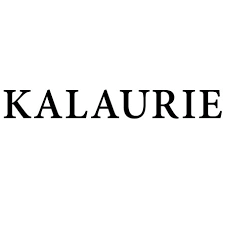

“Drawing inspiration from storytelling, Kalaurie presents annual limited edition capsule collections, with quality, timelessness, craftsmanship and environmental consciousness holding equal priority.”
Kalaurie
🌎
How do they ensure their sustainability?
Kalaurie ensures their sustainability by sourcing eco-friendly materials, minimizing textile waste, and reducing their climate impact. Firstly, they use premium deadstock/surplus fabrics and trims whenever possible. All their shirts are made entirely from deadstock materials, including the buttons and interfusings. Regarding textile materials, Kalaurie prioritizes fabrics made from renewable resources that are biodegradable. This includes natural fibers (wool, cotton, linen, silk) and regenerated cellulose fibers (viscose, cupro, and TENCELTM). Regarding components, they use deadstock materials whenever available and opt for corozo nut or shell buttons otherwise. Kalaurie’s orders are protected with recycled tissue and sent in recycled cardboard boxes. Secondly, Kalaurie works on a made-to-order manufacturing model, meaning that only what is needed is produced and no unnecessary garment waste. Lastly, their pieces are handcrafted to reduce their climate impact.
🌐
How do they ensure their ethics?
Kalaurie’s final production stage is in Australia, a low-risk country for labor abuse. The owner and a small team make the products in-house. Additionally, they trace most of their suppliers.
🤝
Are they part of any giving-back programs?
Kalaurie is not known to be part of any giving-back programs.
🛍️
What is their product range?
- Best for: womenswear
- Product range: dresses, jackets, coats, pants, shirts, skirts, tops, accessories
- Price range: $$$
- Size range: XS–3XL
NICO: Luxury Basics Made Sustainably


“At the core of everything we do at NICO is a strong respect for the people we work with, and the environment we work within.”
Maria Erixon, Co-Founder of NICO
🌎
How do they ensure their sustainability?
NICO promotes sustainability by sourcing eco-friendly textile and packaging materials. Their fabric collection contains a medium proportion of low-impact plant-based fibers, including organic cotton, recycled cotton, and TENCELTM Modal, which is made with sustainably sourced beechwood. Specifically, their cotton fabrics are certified organic with the Global Organic Textile Standard and colored with plant-based dyestuff. NICO also opts for low-impact packaging, such as compostable satchels, which have been designed to break down completely, recycled tissue paper, and reusable, machine-washable lingerie bags.
🌐
How do they ensure their ethics?
NICO is committed to working only with responsible manufacturers who share their values around the safe and fair treatment of workers. The brand traces most of their supply chain and audits some suppliers, including all in the final production stage. They also ensure payment of a living wage in part of their supply chain.
🤝
Are they part of any giving-back programs?
NICO supports organizations working to protect the environment. For example, they donate the proceeds from their CLIMATE ACTION NOW TEE to Seed Mob, an indigenous youth-led climate network building a movement for climate justice. They also produce a limited edition piece, RECLAIMED X NICO SKIRT, of which all proceeds go to the ReclAIMEd program by AIME Mentoring, an initiative offering a solution to re-imagine and re-solve waste in the fashion industry, while at the same time, raising funds to lift kids out of inequality.
🛍️
What is their product range?
- Best for: womenswear, kidswear
- Product range: shirts, hats, scarves, pants, coats, jackets, blazers
- Price range: $$$
- Size range: XS–XXL
HARA the Label: Garments Designed Collectively for You and Our Earth
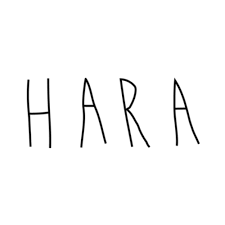
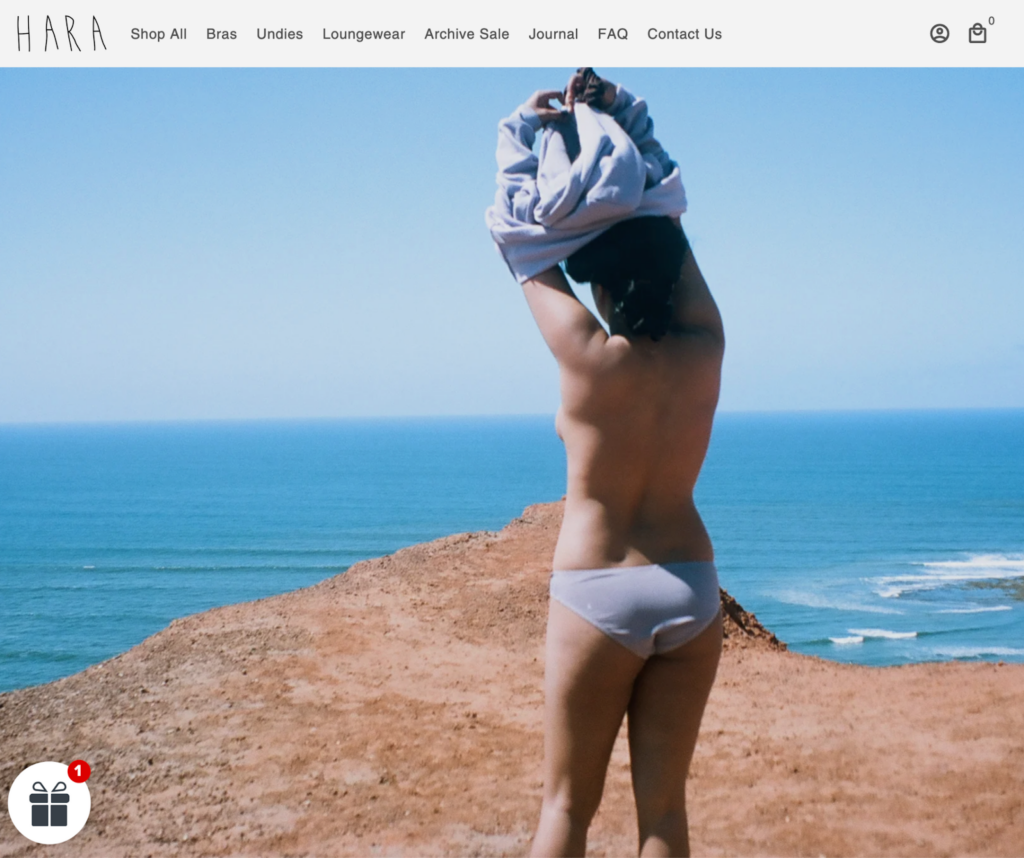
“We stand for slow fashion, transparent supply chains and an ethical production line you can be proud to support.”
HARA the Label
🌎
How do they ensure their sustainability?
HARA the Label promotes sustainability by using mostly low-impact organic bamboo lyocell fabrics for garments. They source only bamboo grown without synthetic pesticides, insecticides, and fertilizers from suppliers with an OEKO-TEX® STANDARD 100 certification. Further down the life-cycle in the manufacturing stage, their bamboo lyocell fabrics are produced in a closed-loop system that filters and reuses all the water and solvent. Additionally, all their clothing items are colored with low-impact, non-toxic dyes. Specifically, they use natural dyes derived from plants like turmeric, indigo, and madder root, as well as GOTS-certified fiber-reactive dyes, which require relatively low water. Lastly, HARA the Label produces clothes locally in Australia to reduce transport carbon footprint.
🌐
How do they ensure their ethics?
HARA the Label traces most of their supply chain, including the final stage of production in Australia.
🤝
Are they part of any giving-back programs?
HARA the Label is not known to be part of any giving-back programs.
🛍️
What is their product range?
- Best for: womenswear
- Product range: underwear, loungewear, loungewear, plus-size
- Price range: $$$
- Size range: XS–5XL
Vege Threads: Ethically Made Basics for Everyday Wear
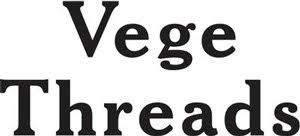
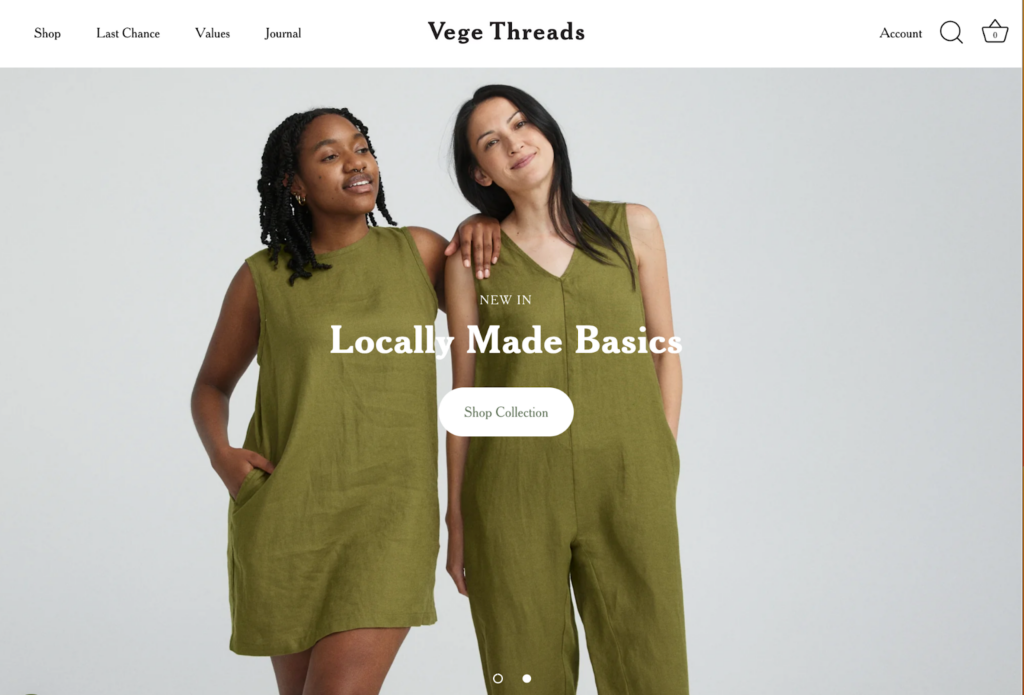
“Vege Threads embraces the shift towards slower living and aims to provide our customers with long lasting, practical yet beautifully designed garments.”
Vege Threads
🌎
How do they ensure their sustainability?
Vege Threads ensures their sustainability by sourcing low-impact materials and reducing their carbon emissions. Firstly, they use natural fabrics, including GOTS-certified organic cotton, hemp, linen, and RWS-certified merino wool. Their fabrics are colored with Australian Certified Organic dyes at a local facility with a high standard of processing wastewater, recycling, and disposing of dye waste to fertilize nearby crops. They also have some fabrics (organic cotton and merino) knitted, and all of their collection is dyed, with all garments made locally in Melbourne to keep the transporting distances relatively low, reducing their carbon emissions.
🌐
How do they ensure their ethics?
Vege Threads partly traces their supply chain. They visit their manufacturing partner regularly and work one-on-one throughout all stages of development and production. The final production stage is certified by Ethical Clothing Australia (ECA).
🤝
Are they part of any giving-back programs?
Vege Threads is not known to be part of any giving-back programs.
🛍️
What is their product range?
- Best for: womenswear
- Product range: T-shirts, singlets, long sleeves, dresses, jumpsuits, tracksuits, bottoms, underwear, stretch garments
- Price range: $$
- Size range: XS–XL
Why Is It Important to Buy Products Made of More Sustainable Fabrics
It is important to buy products made of more sustainable fabrics because a sustainable textile industry has a lower carbon footprint, helps save natural resources, and is better for forests, animals, and humans.
Buying Sustainable Fabrics Reduces Your Carbon Footprint
The production of clothing and footwear is estimated to contribute 10% of global greenhouse gas emissions—more than all international flights and shipping combined. If the fashion industry were a country, it would be the fourth largest emitter of carbon dioxide.
One way to reduce the carbon footprint of the clothes you buy is to opt for sustainable fabrics. Sustainable fabrics, which are often made with natural or recycled fibers, have relatively low carbon footprints compared to petroleum-based fabrics. For example, organic cotton made in the US has a carbon footprint of 2.35 kg CO2 (per ton of spun fiber)—a quarter of polyester’s carbon footprint.
Buying Sustainable Fabrics Reduces Demand for Natural Resources and Waste Management
The textile industry uses water and land to grow cotton and other fibers. It is estimated that 79 billion cubic meters of water were used for the sector worldwide in 2015. For example, producing a single cotton T-shirt requires as much water as one person drinks for 2.5 years (2,700 liters of fresh water).
Worse yet, the textile economy is vastly more linear than circular: the largest amount of resources used in clothes ended up in landfill (instead of being recycled to remake clothes). According to a report by the Ellen MacArthur Foundation,
- Less than 3% of materials used in the textile economy in 2015 came from recycled sources.
- In other words, more than 97% of resources used in making clothes are newly extracted.
When clothing items are disposed of within a short period of time—under a year in the case of half of the fast fashion clothes—the natural systems that provide raw materials for fabrics don’t have enough time to recover and regenerate, which could lead to ecological breakdown.
Sustainable fabrics are made with less water and emissions while lasting longer:
- Because they are durable, you don’t need to buy new clothes too often.
- Thus, you help reduce the pressure to extract more resources for making new items.
Similarly, making and consuming sustainable fabrics made with recycled materials reduces the demand for virgin materials while helping tackle waste management.
Buying Sustainable Fabrics Encourages Sustainable Management of Forests
Sustainable natural fiber fabrics are made with raw materials from forests and plantations that are sustainably managed, such as complying with FSC standards.
When you buy sustainable natural fiber fabrics, you discourage unsustainable forestry practices like illegal logging. You can help reduce deforestation, biodiversity loss, and the effects of climate change.
Buying Sustainable Fabrics Encourages Fairer Treatment of Animals
The fashion industry is rife with animal mistreatment when it comes to making animal-based fabrics like wool or silk. Every year, billions of animals suffer and die for clothing and accessories.
Buying sustainable vegan alternatives can help to reduce the pressure on raising more and more animals to meet the demand for animal-based fabrics while sacrificing their well-being and lives.
Suppose you have to buy fabrics made with, for example, wool or silk; make sure you only choose brands committed to cruelty-free products. In that case, you help advocate better treatments for animals raised within the textile industry.
Using Sustainable Fabrics Encourages Fairer Treatment of Textile Workers
Recent statistics from UNICEF estimated as many as 170 million child laborers worldwide, many of whom were engaged in some form of work in the textile industry. They don’t get paid minimum wages and often work long hours.
When you buy sustainable fabrics from brands transparent about the working conditions at their factories, you discourage the use of child labor and help promote better working conditions for textile workers.
How Can You Generally Buy More Sustainable Fabrics
The key to sustainably buying fabrics is to check on relevant environmental and original certifications.
For natural fabrics:
- Global Organic Textile Standard (GOTS): A globally recognized certification system that ensures a certain threshold of organic content has been met. It covers manufacturing, packaging, labeling, transportation, and distribution (but not what happens in the fields where crops are grown).
- USDA Certified Biobased Product: The USDA BioPreferred® Certification is a voluntary certification offered by the United States Department of Agriculture. The certification identifies products made from plants or other renewable materials.
- Ecolabel: Ecolabel is the official European Union voluntary label recognized worldwide for certified products with a guaranteed, independently verified low environmental impact. The label requires high environmental standards throughout the entire life-cycle: from raw material extraction through production and distribution to disposal. It also encourages companies to develop innovative, durable, easy-to-repair, and recyclable products.
For natural fiber semi-natural/semi-synthetic fabrics:
- Forest Stewardship Council: An FSC certification ensures that the wood (or wood-like material) comes from responsibly managed forests that provide environmental, social, and economic benefits.
There are two types of FSC Certification:- FSC Forest Management Certification, with a focus on the origin of the wood—the forest.
- FSC Chain of Custody Certification, which focuses on the path from the forest to the customer’s home.
- Program for Endorsement of Forest Certification: PEFC’s approaches to sustainable forest management are in line with protecting the forests globally and locally and making the certificate work for everyone. Getting a PEFC certification is strict enough to ensure the sustainable management of a forest is socially just, ecologically sound, and economically viable but attainable not only by big but small forest owners.
For recycled fabrics:
- Recycled Claim Standard (RCS): The Textile Exchange RCS was originally developed as an international, voluntary standard that sets requirements for third-party certification of Recycled input and chain of custody.
- The Global Recycled Standard (GRS): The Global Recycled Standard (GRS) is an international, voluntary, full product standard that sets requirements for third-party certification of Recycled Content, chain of custody, social and environmental practices, and chemical restrictions. It can be used for any product with more than 20% recycled material.
For all types of fabrics:
- STeP by OEKO-TEX®: STeP by OEKO-TEX® is an independent certification system for brands, retailers, and manufacturers from the textile and leather industry. It communicates organizational environmental measures, including reducing carbon footprint and water usage.
- OEKO-TEX® Standard 100: OEKO-TEX® labels aim to ensure that products pose no risk to human health (i.e., containing banned chemicals).
Some certifications that are signaling brands’ efforts toward lowered environmental impacts and a circular economy are:
- B Corp Certification: The label B Corp is a certification reserved for for-profit companies. Certified holders are assessed on their social and environmental impacts.
- Cradle2Cradle certification: Cradle2Cradle provides a standardized approach to material circularity. It assesses whether products have been suitably designed and made with the circular economy in mind covering five critical categories: material health, material reuse, renewable energy and carbon management, water stewardship, and social fairness.
Final Thoughts
The geographical journey of garments often plays an important role in their sustainability because it affects many social and ecological aspects of a product’s life-cycle, from the treatment of textile workers to the use of chemicals. Thus, it is important to keep the origin of your garments in mind when you make your next purchase.
By purchasing clothes from Australian clothing brands that commit to sustainability, you support their mission to create a fairer and less harmful textile industry for all lives on Earth.
Here is the list (again) of the most sustainable Australian clothing brands:
- Outland Denim
- Boody
- The Common Good Company
- The Very Good Bra
- All the Wild Roses
- Bondi Born
- A.BCH
- ELK
- peony
- Bhumi
- Elle Evans
- JOSLIN
- Flare Street
- Luna + Sun
- Bon Label
- Dharma Bums
- Kalaurie
- NICO
- Hara the Label
- Vege Threads
To make your use of clothing items from these Australian clothing brands even more sustainable, follow these steps:
- Buy second-hand, recycled, or upcycled clothes made with low-impact materials.
- Keep your clothes for as long as possible.
- At the end-of-life of your clothes, upcycle the materials to extend their usage and arrange for them to be recycled or properly disposed of.
Stay impactful,

Sources
- Science Direct: Life-cycle assessment (LCA)
- Outland Denim: Home
- Boody: Home
- The Common Good Company: Home
- The Very Good Bra: Home
- All The Wild Roses: Home
- Bondi Born: Home
- A.BCH: Home
- ELK: Home
- peony: Home
- Bhumi: Home
- Elle Evans: Home
- Kalaurie: Home
- Flare Street: Home
- Luna + Sun: Home
- Bon Label: Home
- Dharma Bums: Home
- JOSLIN: Home
- NICO: Home
- HARA The Label: Home
- Vege Threads: Home
- B Corporation: Outland Denim
- Outland Denim: Environmental
- Good On You: Brand Directory | Outland Denim
- Outland Denim: Our raw materials
- Impactful Ninja: How Sustainable Are Organic Cotton Fabrics? A Life-Cycle Analysis
- Global Organic Textile Standard: Home
- Impactful Ninja: How Sustainable Are Lyocell Fabrics? A Life-Cycle Analysis
- Lenzing: TENCEL
- Impactful Ninja: How Sustainable Are Recycled Cotton Fabrics? A Life-Cycle Analysis
- Impactful Ninja: How Sustainable Are Cotton Fabrics? A Life-Cycle Analysis
- Better Cotton Initiative: Home
- Impactful Ninja: How Sustainable Are Linen Fabrics? A Life-Cycle Analysis
- Impactful Ninja: How Sustainable Are Recycled Polyester? A Life-Cycle Analysis
- Jeanologia: Home
- Outland Denim: Suppliers’ Code of Conduct
- Outland Denim: About
- B Corporation: Boody
- Impactful Ninja: How Sustainable Are Bamboo Fabrics? A Life-Cycle Analysis
- Impactful Ninja: How Sustainable Are Organic Cotton Fabrics? A Life-Cycle Analysis
- Boody: About Boody
- Good On You: Brand Directory | Boody
- Impactful Ninja: How Sustainable Are Bamboo Lyocell Fabrics? A Life-Cycle Analysis
- Boody: LYOLYTE™ Lyocell Underwear
- Impactful Ninja: How Sustainable Are Bamboo Viscose Fabrics? A Life-Cycle Analysis
- Boody: Our Process
- Impactful Ninja: How Sustainable Are Cotton Fabrics? A Life-Cycle Analysis
- Global Organic Textile Standard: Home
- Boody: The Goodness Loop
- Boody: Code of Conduct
- International Labour Organization: Fundamental Principles and Rights at Work
- Worldwide Responsible Accredited Production (WRAP): Home
- One Percent For The Planet: Home
- Boody: Soft Jersey Beanie
- Chris O’Brien Lifehouse: Home
- Thread Together: Home
- B Corporation: The Common Good Company
- The Common Good Company: OUR (RECYCLED) MATERIAL
- Textile Exchange: Global Recycled Standard
- Impactful Ninja: How Sustainable Are Recycled Cotton Fabrics? A Life-Cycle Analysis
- Impactful Ninja: How Sustainable Are Recycled Polyester? A Life-Cycle Analysis
- The Common Good Company: 2022 Impact Report
- The Common Good Company: OUR CERTIFICATIONS
- Noissue Eco Alliance: Home
- The Common Good Company: OUR ACCOUNTABILITY
- Sendle: Home
- Good On You: Brand Directory | The Common Good Company
- Fairtrade International: Home
- SA International: SA8000
- SEDEX: Home
- Surfers For Climate: Recycled beanies
- The Common Good Company: Our Future, Our Planet, Our Game.
- Footy For Climate: Home
- B Corporation: The Very Good Bra
- The Very Good Bra: Our Story
- The Very Good Bra: V for Victory Bra
- Impactful Ninja: How Sustainable Are Organic Cotton Fabrics? A Life-Cycle Analysis
- The Very Good Bra: How we work
- The Very Good Bra: Our Responsible Business Practices
- The Very Good Bra: Replacement straps
- Good On You: Brand Directory | The Very Good Bra
- The Very Good Bra: Factory Code of Conduct
- International Labour Organization: Fundamental Principles and Rights at Work
- Iequalchange: Home
- The Social Outfit: Home
- Whitehouse Design: Home
- Thread Together: Home
- B Corporation: All The Wild Roses
- All The Wild Roses: SUSTAINABLE PRACTICES
- Impactful Ninja: How Sustainable Are Linen Fabrics? A Life-Cycle Analysis
- Impactful Ninja: How Sustainable Are Cotton Fabrics? A Life-Cycle Analysis
- Impactful Ninja: How Sustainable Are Rayon Fabrics? A Life-Cycle Analysis
- Good On You: Brand Directory | All The Wild Roses
- GreenFleet: Home
- All The Wild Roses: GIVING BACK
- B Corporation: Bondi Born
- Bondi Born: BONDI BORN SUSTAINABILITY AND ETHICS STATEMENT
- European Commission: REACH Regulation
- OEKO-TEX: Home
- Bondi Born: Sculpteur
- Bondi Born: B Corp Certified
- CHANGE CLIMATE: Wolven is Climate Neutral Certified
- Bondi Born: Code of Conduct
- International Labour Organization: ILO Declaration on Fundamental Principles and Rights at Work
- Good On You: Brand Directory | Bondi Born
- A.BCH: Circular Design
- A.BCH: Material List
- A.BCH: Fibre 101: Cotton
- Global Organic Textile Standard: Home
- Impactful Ninja: How Sustainable Are Organic Cotton Fabrics? A Life-Cycle Analysis
- Impactful Ninja: How Sustainable Are Recycled Cotton Fabrics? A Life-Cycle Analysis
- A.BCH: Fibre 101: Linen
- Impactful Ninja: How Sustainable Are Hemp Fabrics? A Life-Cycle Analysis
- A.BCH: Fibre 101: RWS Wool
- Textile Exchange: Responsible Wool Standard
- Impactful Ninja: How Sustainable Are Recycled Wool Fabrics? A Life-Cycle Analysis
- A.BCH: Fibre 101: TENCEL
- Impactful Ninja: How Sustainable Are Recycled Polyester? A Life-Cycle Analysis
- A.BCH: Lifecycle Program
- A.BCH: General Care
- Good On You: Brand Directory | A.BCH
- A.BCH: FAQs | Sustainability and Ethics
- Ethical Clothing Australia: Home
- ELK: Transparency Report
- ELK: ELK PREFERRED FIBRES & MATERIALS SOURCING GUIDE
- Fairtrade International: Home
- Global Organic Textile Standard: Home
- Impactful Ninja: How Sustainable Are Organic Cotton Fabrics? A Life-Cycle Analysis
- Impactful Ninja: How Sustainable Are Organic Linen Fabrics? A Life-Cycle Analysis
- Impactful Ninja: How Sustainable Are Organic Hemp Fabrics? A Life-Cycle Analysis
- Impactful Ninja: How Sustainable Are Wool Fabrics? A Life-Cycle Analysis
- Impactful Ninja: How Sustainable Are TENCELTM Fabrics? A Life-Cycle Analysis
- Textile Exchange: Organic Content Standard
- Cotton Made in Africa: Home
- Cotton Australia: Home
- Impactful Ninja: How Sustainable Are Linen Fabrics? A Life-Cycle Analysis
- Impactful Ninja: How Sustainable Are Hemp Fabrics? A Life-Cycle Analysis
- Impactful Ninja: How Sustainable Are Lyocell Fabrics? A Life-Cycle Analysis
- Impactful Ninja: How Sustainable Are Modal Fabrics? A Life-Cycle Analysis
- Impactful Ninja: How Sustainable Are Viscose Fabrics? A Life-Cycle Analysis
- ELK: Supplier listing
- Sedex: SMETA Best Practice Guidance
- ELK: Code of Conduct
- Good On You: Brand Directory | ELK
- International Labour Organization: ILO Declaration on Fundamental Principles and Rights at Work
- ELK: 1% for the Planet
- 1% for the Planet: Home
- ELK: GIVING
- TreeProject: Home
- Nature Foundation: Home
- Oxfam Australia: Home
- Fitted for Work: Home
- peony: Community
- peony: Materials
- Repreve: REPREVE®
- Impactful Ninja: How Sustainable Are ECONYL® Fabrics? A Life-Cycle Analysis
- Impactful Ninja: How Sustainable Are Nylon Fabrics? A Life-Cycle Analysis
- Global Organic Textile Standard: Home
- Impactful Ninja: How Sustainable Are Organic Cotton Fabrics? A Life-Cycle Analysis
- European Alliance for Flax and Hemp: European Flax® Certification
- Impactful Ninja: How Sustainable Are Linen Fabrics? A Life-Cycle Analysis
- Impactful Ninja: How Sustainable Are EcoVero® Fabrics? A Life-Cycle Analysis
- Impactful Ninja: How Sustainable Are Viscose Fabrics? A Life-Cycle Analysis
- Lenzing: Home
- EU Ecolabel’: Home
- Impactful Ninja: How Sustainable Are Recycled Polyester? A Life-Cycle Analysis
- Impactful Ninja: How Sustainable Are Hemp Fabrics? A Life-Cycle Analysis
- Forest Stewardship Council: Home
- peony: Design
- peony: Wear more, wash less
- peony: Manufacturing
- Good On You: Brand Directory | peony
- Amfori: BSCI
- SA International: SA8000
- OEKO-TEX: Home
- Worn for Good: Home
- Thread Together: Home
- Bhumi: Seed to Shelf
- Impactful Ninja: How Sustainable Are Organic Linen Fabrics? A Life-Cycle Analysis
- Impactful Ninja: How Sustainable Are Organic Cotton Fabrics? A Life-Cycle Analysis
- Global Organic Textile Standard: Home
- Fairtrade International: Home
- Bhumi: Our Commitment to SUSTAINABILITY
- Good On You: Brand Directory | Bhumi
- Green Story: Home
- Good On You: Brand Directory | Elle Evans
- Impactful Ninja: How Sustainable Are ECONYL® Fabrics? A Life-Cycle Analysis
- Elle Evans: Steps in Sustainability
- Sendle: Home
- Healthy Seas: Home
- Good On You: Brand Directory | Elle Evans
- Econyl: Home
- Elle Evans: Steps in Sustainability
- Sendle: Home
- Healthy Seas: Home
- Impactful Ninja: How Sustainable Are Linen Fabrics? A Life-Cycle Analysis
- JOSLIN: Textiles & Traceability
- European Alliance for Flax and Hemp: European Flax® Certification
- Impactful Ninja: How Sustainable Are Organic Cotton Fabrics? A Life-Cycle Analysis
- Global Organic Textile Standard: Home
- Impactful Ninja: How Sustainable Are Cashmere Fabrics? A Life-Cycle Analysis
- The Good Cashmere Standard: Home
- Impactful Ninja: How Sustainable Are Merino Wool Fabrics? A Life-Cycle Analysis
- Textile Exchange: Responsible Wool Standard
- Impactful Ninja: How Sustainable Are Silk Fabrics? A Life-Cycle Analysis
- Impactful Ninja: How Sustainable Are Ramie Fabrics? A Life-Cycle Analysis
- Textile Exchange: Global Recycled Standard
- Forest Stewardship Council
- Impactful Ninja: How Sustainable Are Viscose Fabrics? A Life-Cycle Analysis
- OEKO-TEX: OEKO-TEX STANDARD 100
- JOSLIN: Design Philosophy
- JOSLIN: Code of Conduct
- Good On You: Brand Directory | JOSLIN
- International Labour Organization: ILO Declaration on Fundamental Principles and Rights at Work
- JOSLIN: Responsibility and Transparency
- Amfori: BSCI
- Sedex: SMETA Best Practice Guidance
- Good On You: Brand Directory | Flare Street
- Carbon Neutral Charitable Fund: Carbon Positive Australia
- Flare Street: Our Ethos and Sustainability
- Ethical Clothing Australia: Home
- Flare Street: DAY 4: FIND OUT MORE ABOUT THE FLARE STREET DESIGN PROCESS
- Flare Street: The creation of Flare Street pieces!
- Flare Street: DAY 3: FASHION REVOLUTION WEEK – WE’RE SHINING THE LIGHT ON OUR FLARE STREET SUPPLIERS
- We are Djirra: Home
- Luna + Sun: Australian Made Clothing
- Impactful Ninja: How Sustainable Are Linen Fabrics? A Life-Cycle Analysis
- OEKO-TEX: OEKO-TEX STANDARD 100
- Luna + Sun: Sustainability
- Impactful Ninja: How Sustainable Are Organic Cotton Fabrics? A Life-Cycle Analysis
- UPPAREL: Home
- AirRobe: Home
- Rntr: Home
- Luna + Sun: Transparency
- Ethical Clothing Australia: Home
- One Tree Planted : Home
- Bon Label: Good Values
- Fairtrade International: Home
- Impactful Ninja: How Sustainable Are Cotton Fabrics? A Life-Cycle Analysis
- Bon Label: Doing Good Things For Womankind
- Bon Label: Unfuckupable Design
- Global Organic Textile Standard: Home
- OCC Apparel: Home
- Fairwear Foundation: Home
- Bon Label: bon label + i=change
- iequalchange: Her Future Coalition
- iequalchange: Asylum Seeker Resource Center
- iequalchange: Greening Australia
- Dharma Bums: Sustainability
- Impactful Ninja: How Sustainable Are Recycled Polyester? A Life-Cycle Analysis
- Lenzing: Home
- Impactful Ninja: How Sustainable Are Modal Fabrics? A Life-Cycle Analysis
- Dharma Bums: Our Fabrics
- Bluesign: Home
- OEKO-TEX: OEKO-TEX MADE IN GREEN
- Good On You: Brand Directory | Dharma Bums
- Dharma Bums: Ethics
- AMFORI: BSCI
- Kalaurie: About
- Impactful Ninja: How Sustainable Are Natural Fabrics? A Life-Cycle Analysis
- Impactful Ninja: How Sustainable Are Wool Fabrics? A Life-Cycle Analysis
- Impactful Ninja: How Sustainable Are Cotton Fabrics? A Life-Cycle Analysis
- Impactful Ninja: How Sustainable Are Linen Fabrics? A Life-Cycle Analysis
- Impactful Ninja: How Sustainable Are Silk Fabrics? A Life-Cycle Analysis
- Impactful Ninja: How Sustainable Are Viscose Fabrics? A Life-Cycle Analysis
- Impactful Ninja: How Sustainable Are Cupro Fabrics? A Life-Cycle Analysis
- Impactful Ninja: How Sustainable Are TENCELTM Fabrics? A Life-Cycle Analysis
- Good On You: Brand Directory | Kalaurie
- Good On You: Brand Directory | NICO
- Impactful Ninja: How Sustainable Are Organic Cotton Fabrics? A Life-Cycle Analysis
- Impactful Ninja: How Sustainable Are Recycled Cotton Fabrics? A Life-Cycle Analysis
- Impactful Ninja: How Sustainable Are TENCELTM Fabrics? A Life-Cycle Analysis
- NICO: MATERIALS
- Impactful Ninja: How Sustainable Are Cotton Fabrics? A Life-Cycle Analysis
- Global Organic Textile Standard: Home
- NICO: Packaging
- NICO: MAKERS
- NICO: CLIMATE ACTION NOW TEE
- NICO: RECLAIMED X NICO SKIRT
- Moah: ReclAIMEd program
- Impactful Ninja: How Sustainable Are Bamboo Lyocell Fabrics? A Life-Cycle Analysis
- HARA The Label: Bamboo Fabric
- OEKO-TEX: OEKO-TEX® STANDARD 100
- Good On You: Brand Directory | HARA the Label
- HARA the Label: Natural dyes
- Impactful Ninja: How Sustainable Are Natural Fabrics? A Life-Cycle Analysis
- Global Organic Textile Standard: Home
- Impactful Ninja: How Sustainable Are Organic Cotton Fabrics? A Life-Cycle Analysis
- Impactful Ninja: How Sustainable Are Hemp Fabrics? A Life-Cycle Analysis
- Impactful Ninja: How Sustainable Are Linen Fabrics? A Life-Cycle Analysis
- Textile Exchange: Responsible Wool Standard
- Impactful Ninja: How Sustainable Are Merino Wool Fabrics? A Life-Cycle Analysis
- Vege Threads: Fabrics & Dyes
- Vege Threads: Ethical Manufacturing
- Good On You: Brand Directory | Vege Threads
- Ethical Clothing Australia: Home
- European Parliament: The impact of textile production and waste on the environment (infographic)
- Science Direct: The challenge of “Depeche Mode” in the fashion industry – Does the industry have the capacity to become sustainable through circular economic principles, a scoping review
- Science Direct: Carbon Footprint of Textile and Clothing Products
- European Parliament: Environmental impact of the textile and clothing industry
- European Parliament: What if fashion were good for the planet?
- Ellen MacArthur Foundation: A New Textiles Economy: Redesigning fashion’s future
- McKinsey: Style that’s sustainable: A new fast-fashion formula
- Forest Stewardship Council: Home
- Our World in Data: Deforestation and Forest Loss
- Our World in Data: Renewable Energy
- Peta: Animals Used For Clothing
- The Guardian: Child labour in the fashion supply chain
- Impactful Ninja: How Sustainable Are Natural Fabrics? A Life-Cycle Analysis
- Global Organic Textile Standard (GOTS): Home
- BioPreferred: WHAT IS THE BIOPREFERRED PROGRAM?
- European Commission: Environment | EU Ecolabel
- Impactful Ninja: How Sustainable Are Semi-Natural/Semi-Synthetic Fabrics? A Life-Cycle Analysis
- Forest Stewardship Council
- FSC Forest Management Certification
- FSC Chain of Custody Certification
- Textile Exchange: The RCS and GRS are designed to boost the use of recycled materials
- Program for Endorsement of Forest Certification
- Impactful Ninja: How Sustainable Are Recycled Fabrics? A Life-Cycle Analysis
- Textile Exchange: Recycled Claim Standard
- Textile Exchange: Global Recycled Standard
- OEKO-TEX: Certification according to STeP by OEKO-TEX®
- OEKO-TEX: STANDARD 100 by OEKO-TEX®
- B Corp Certification: Home
- C2CCertified: Home
